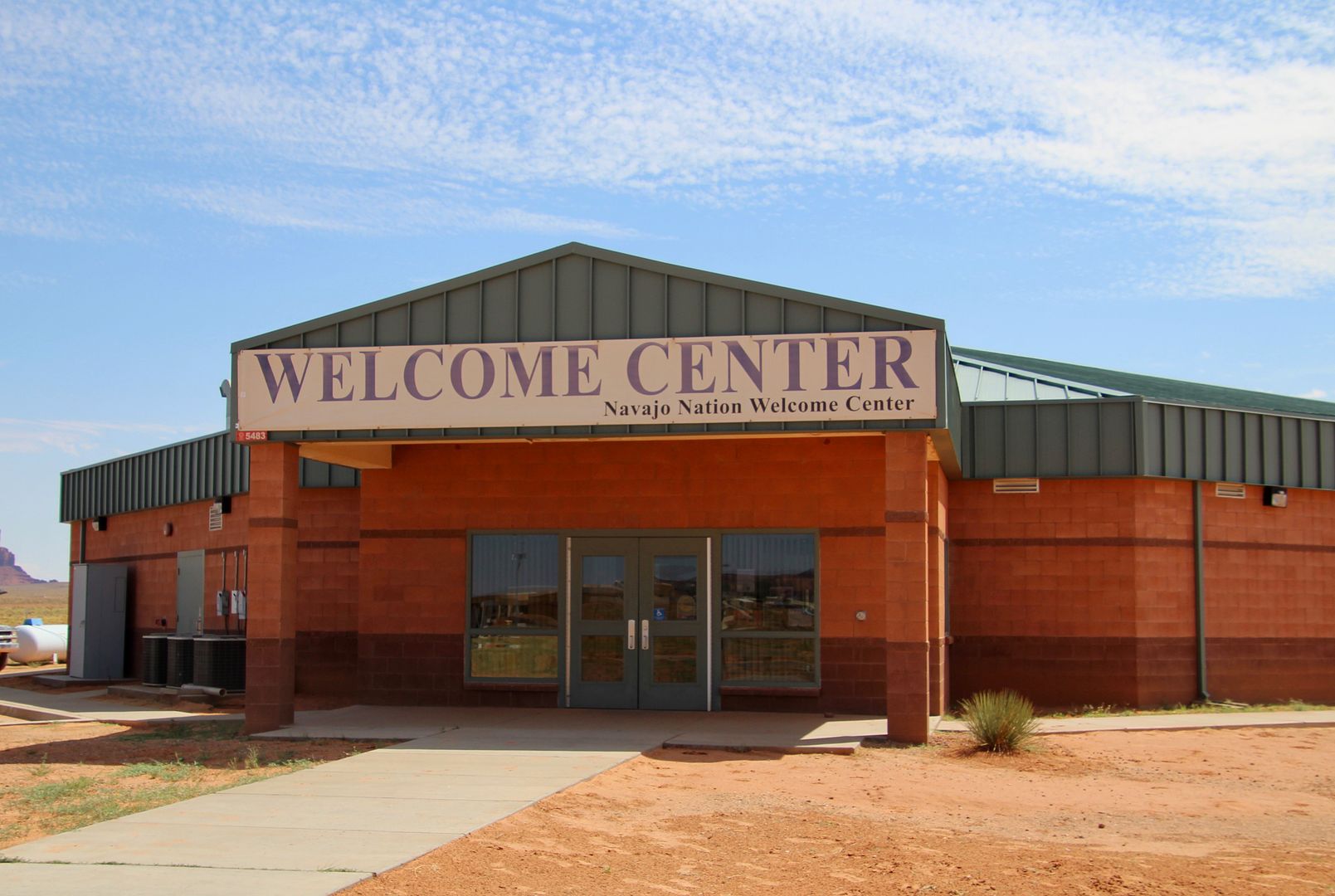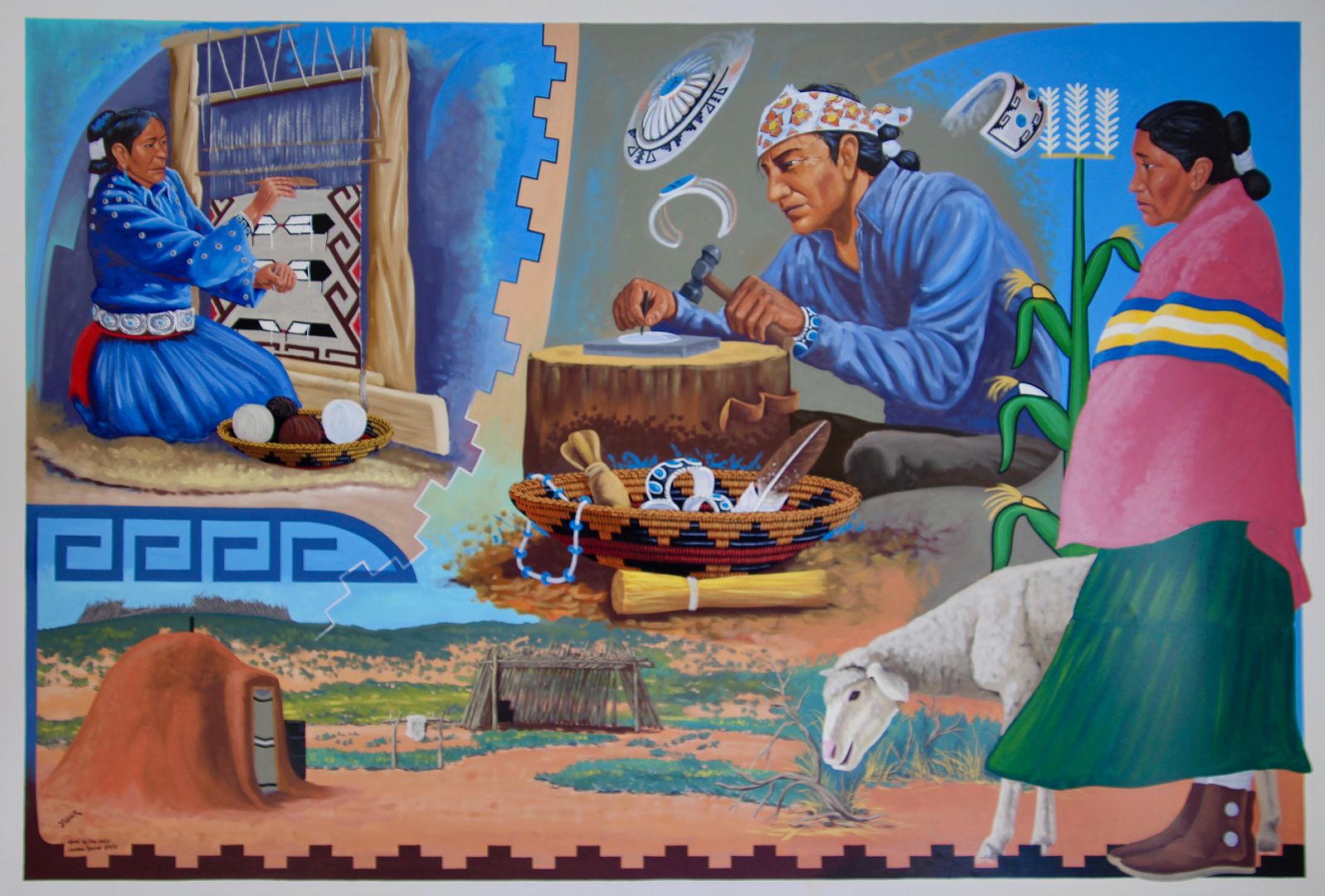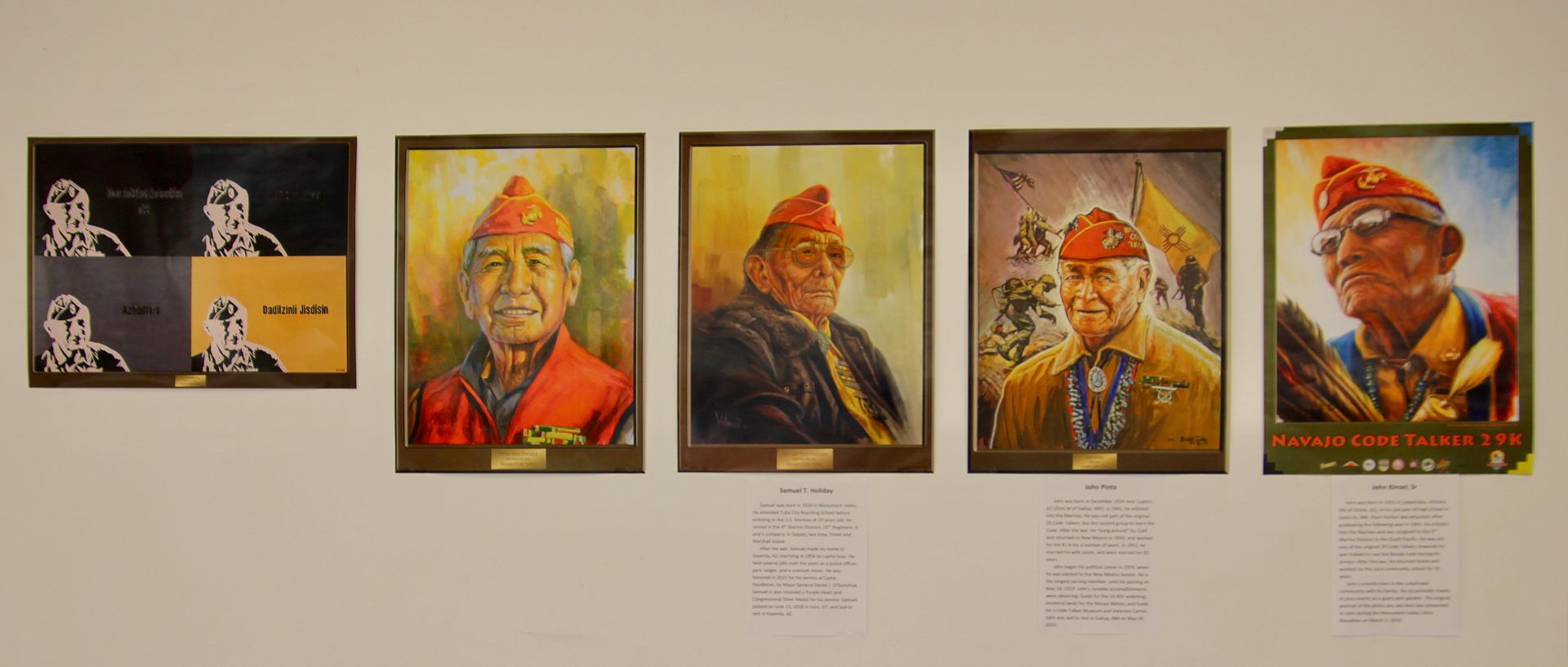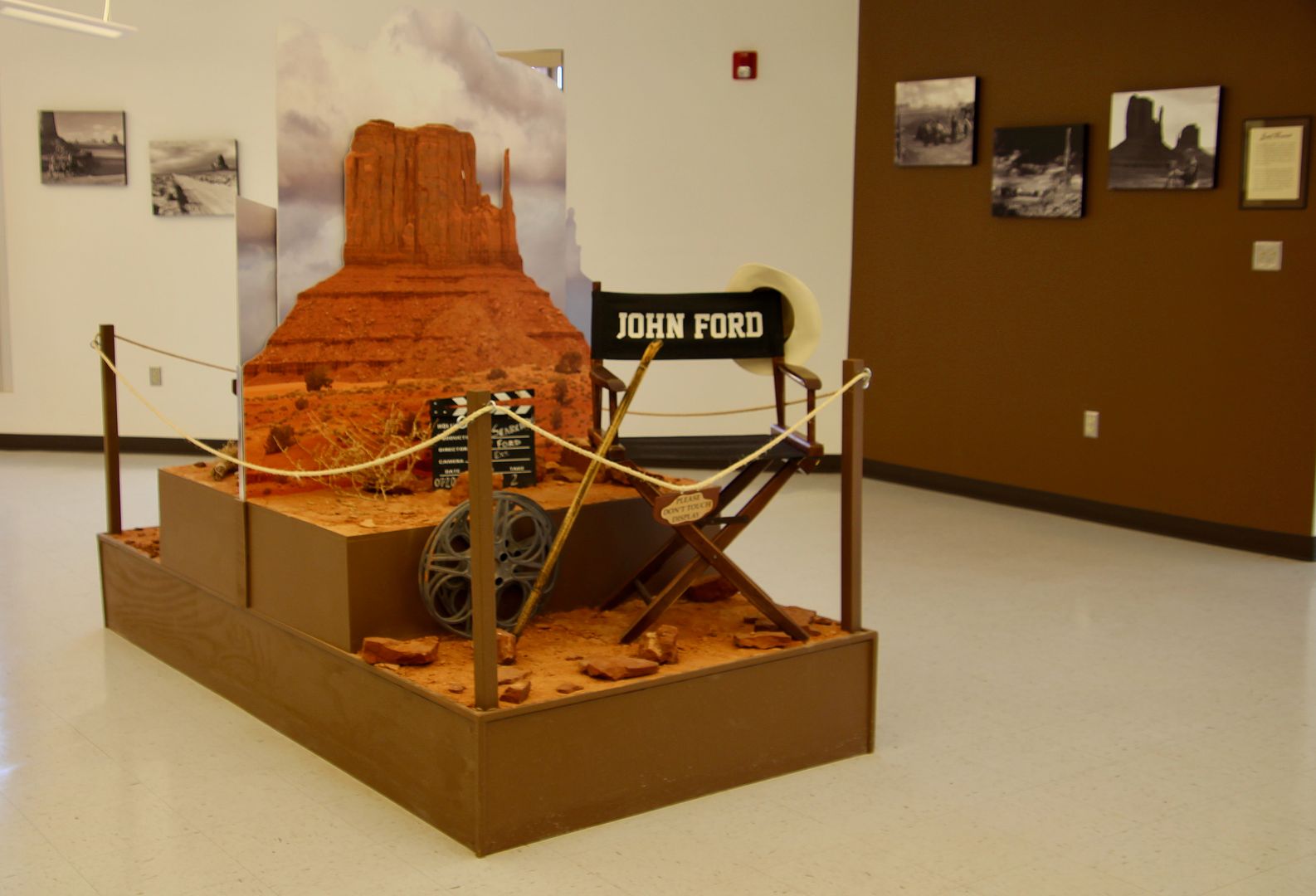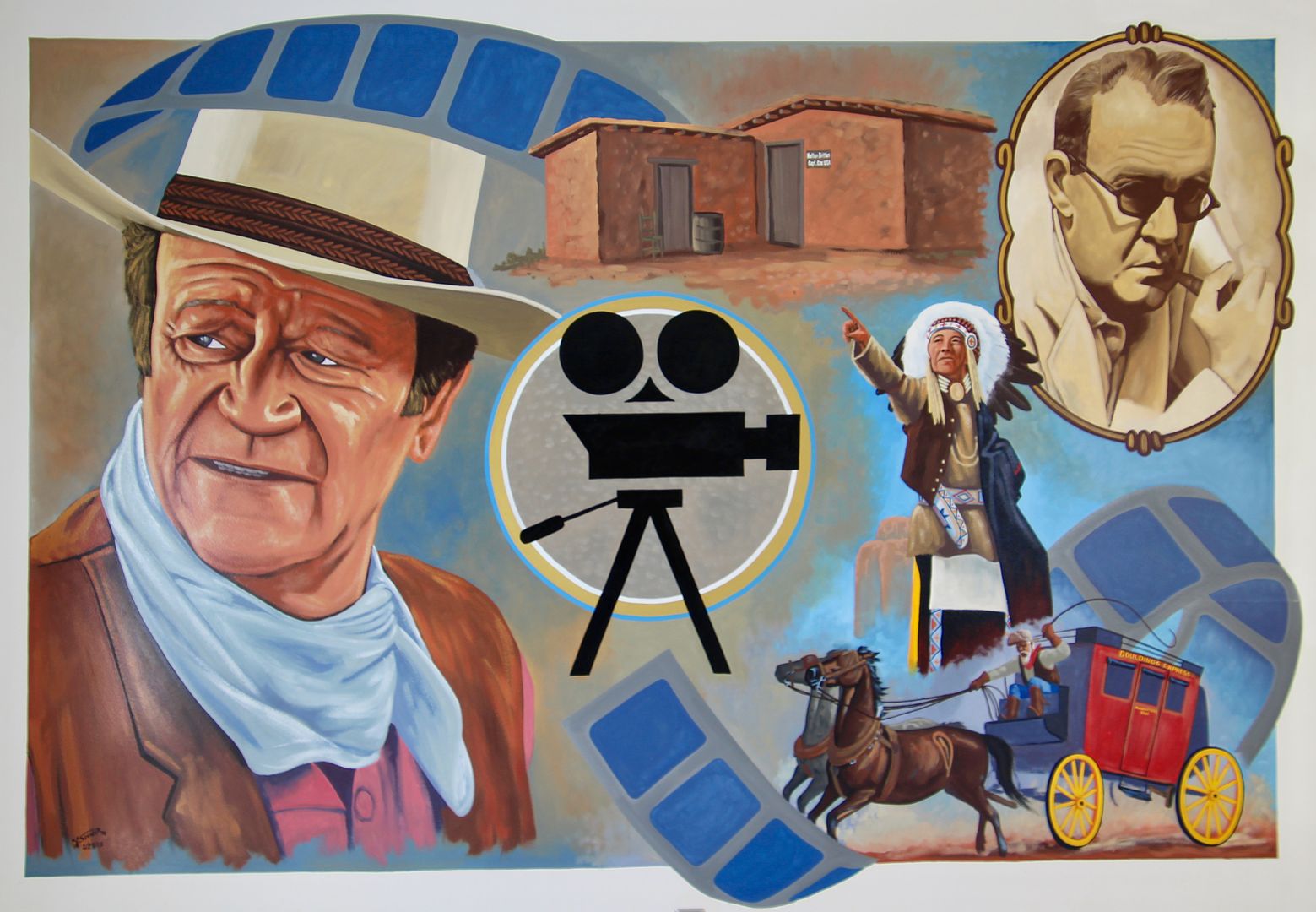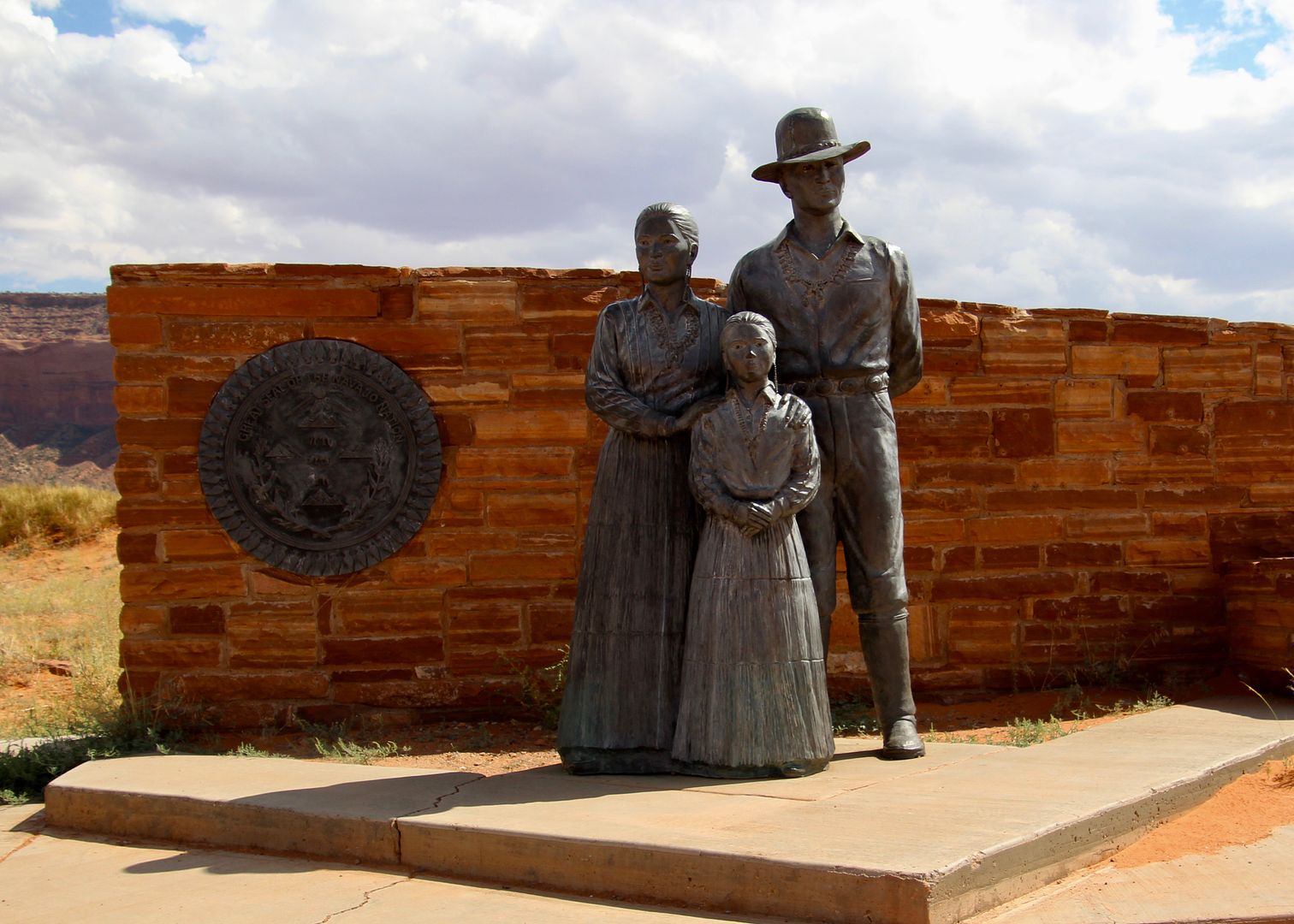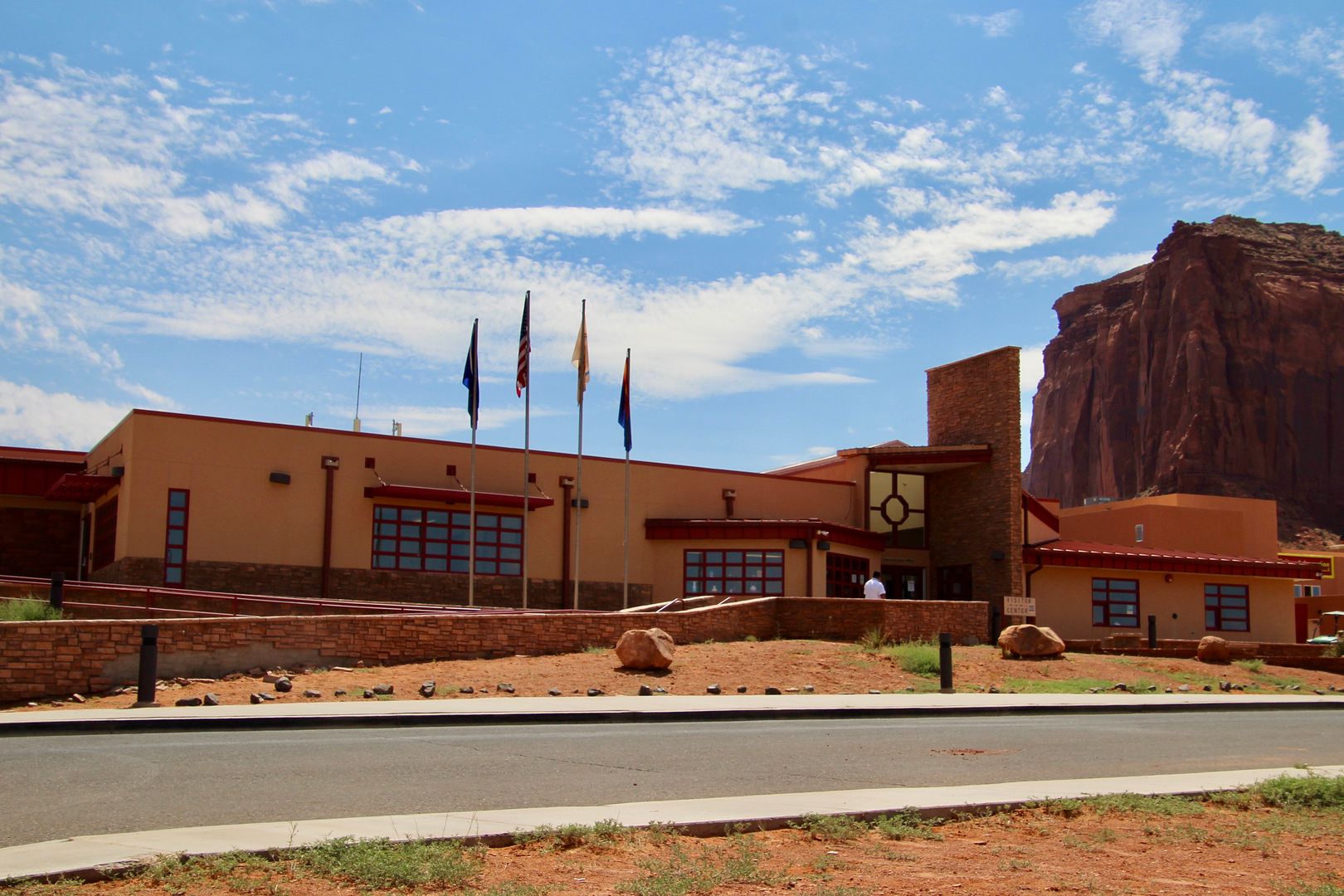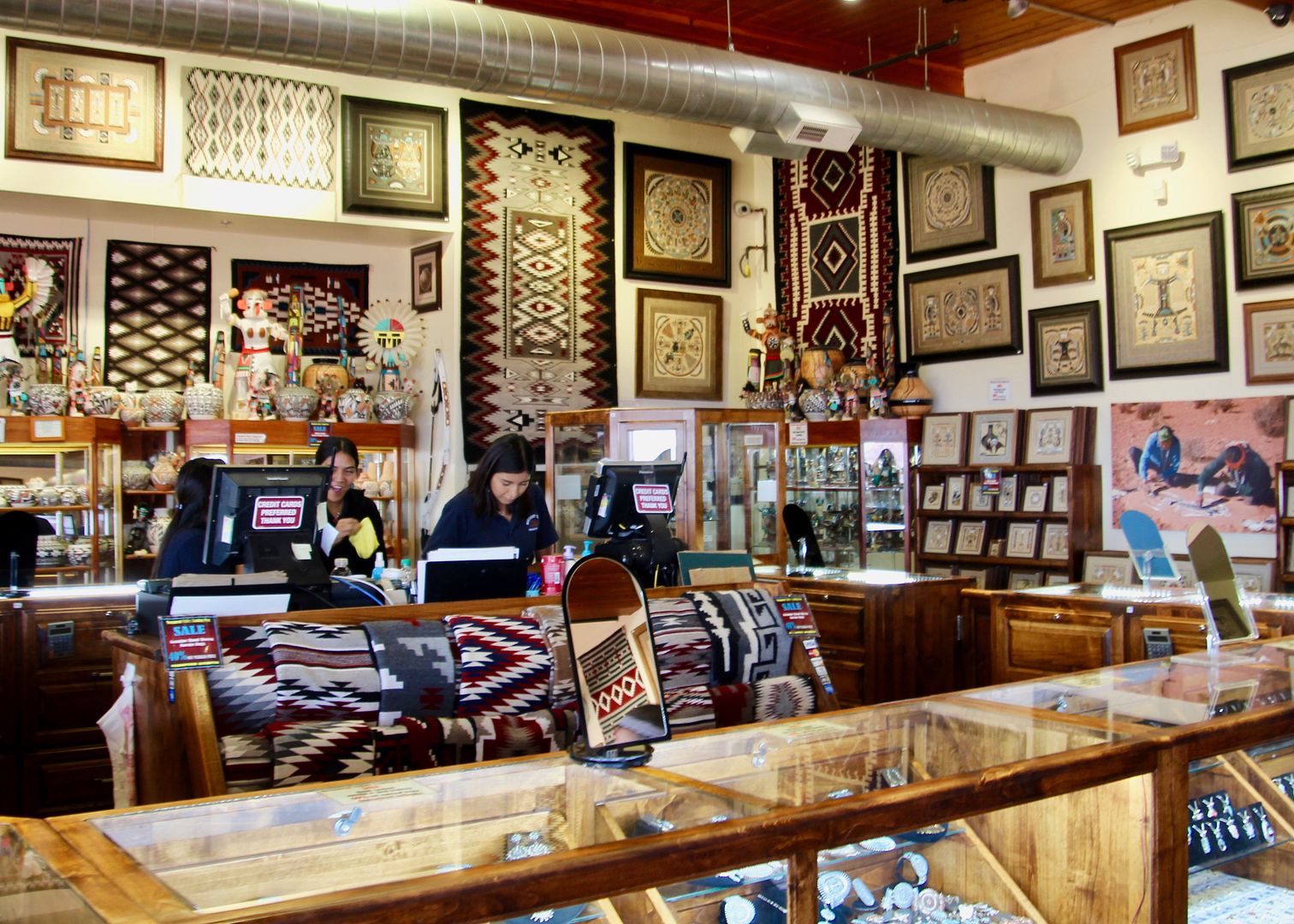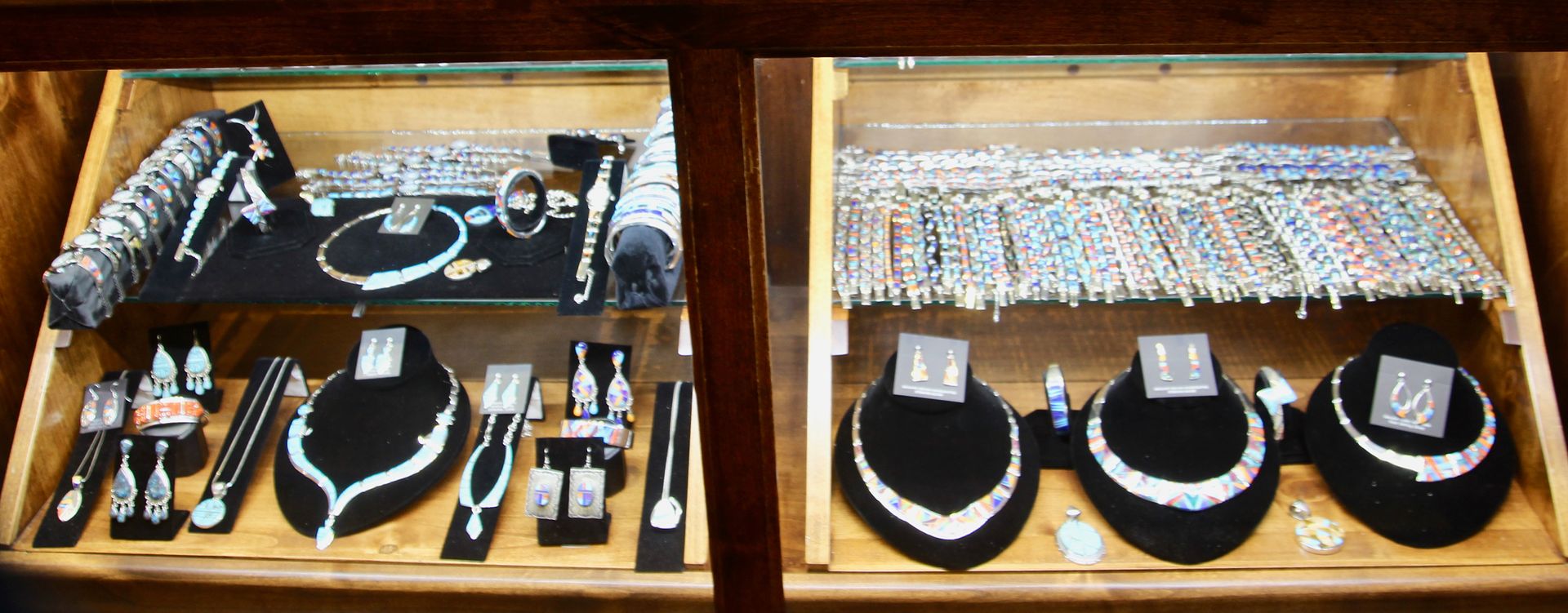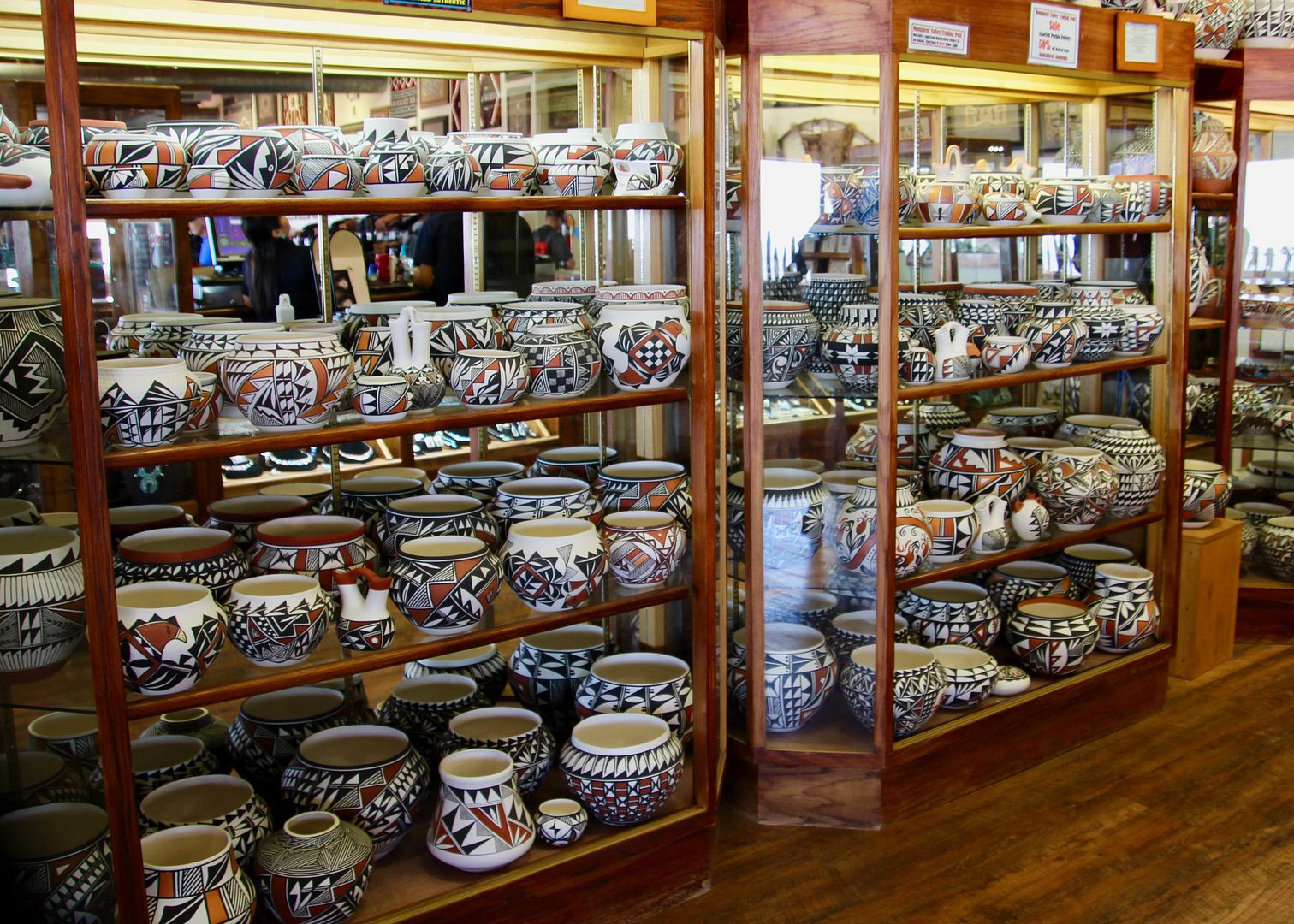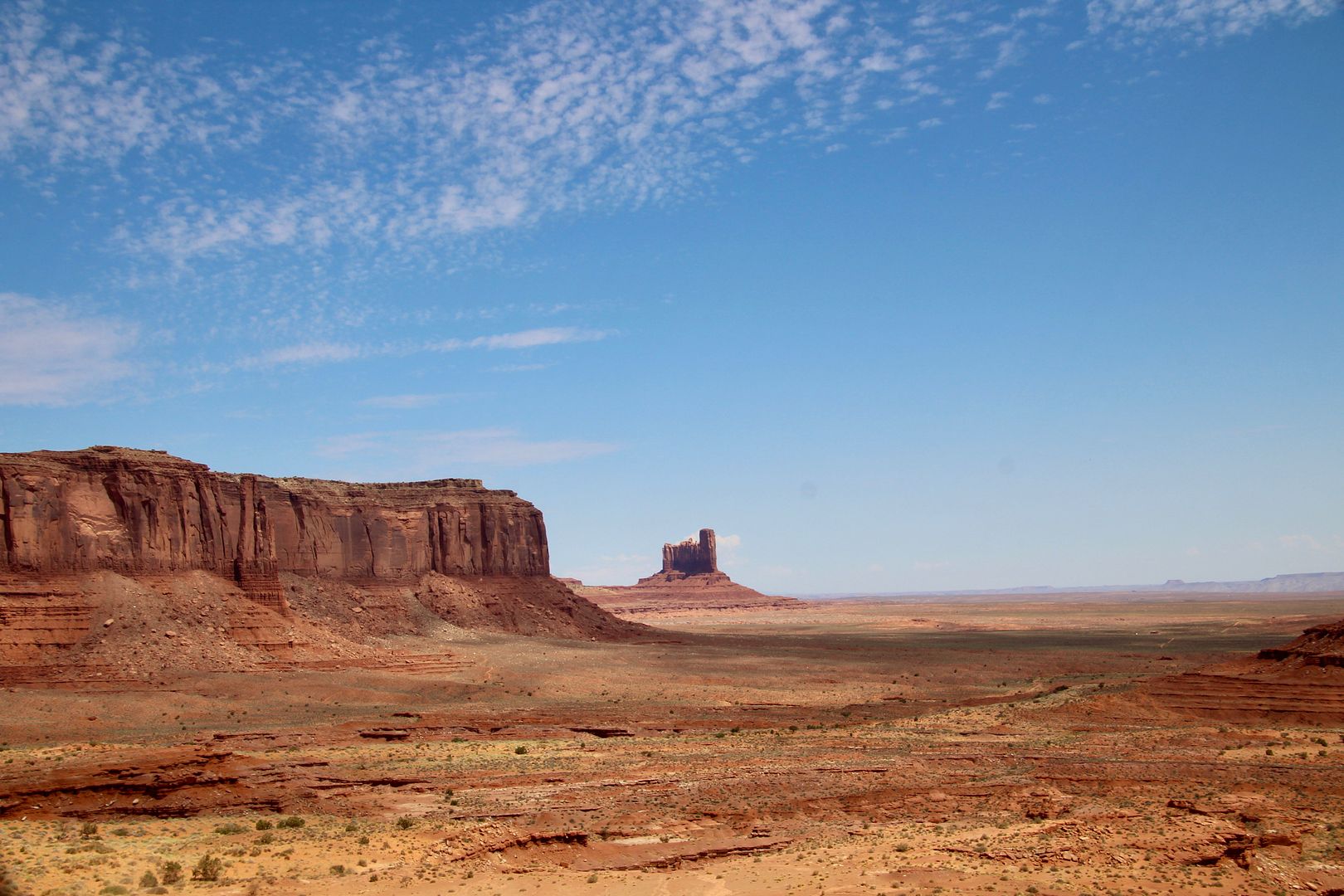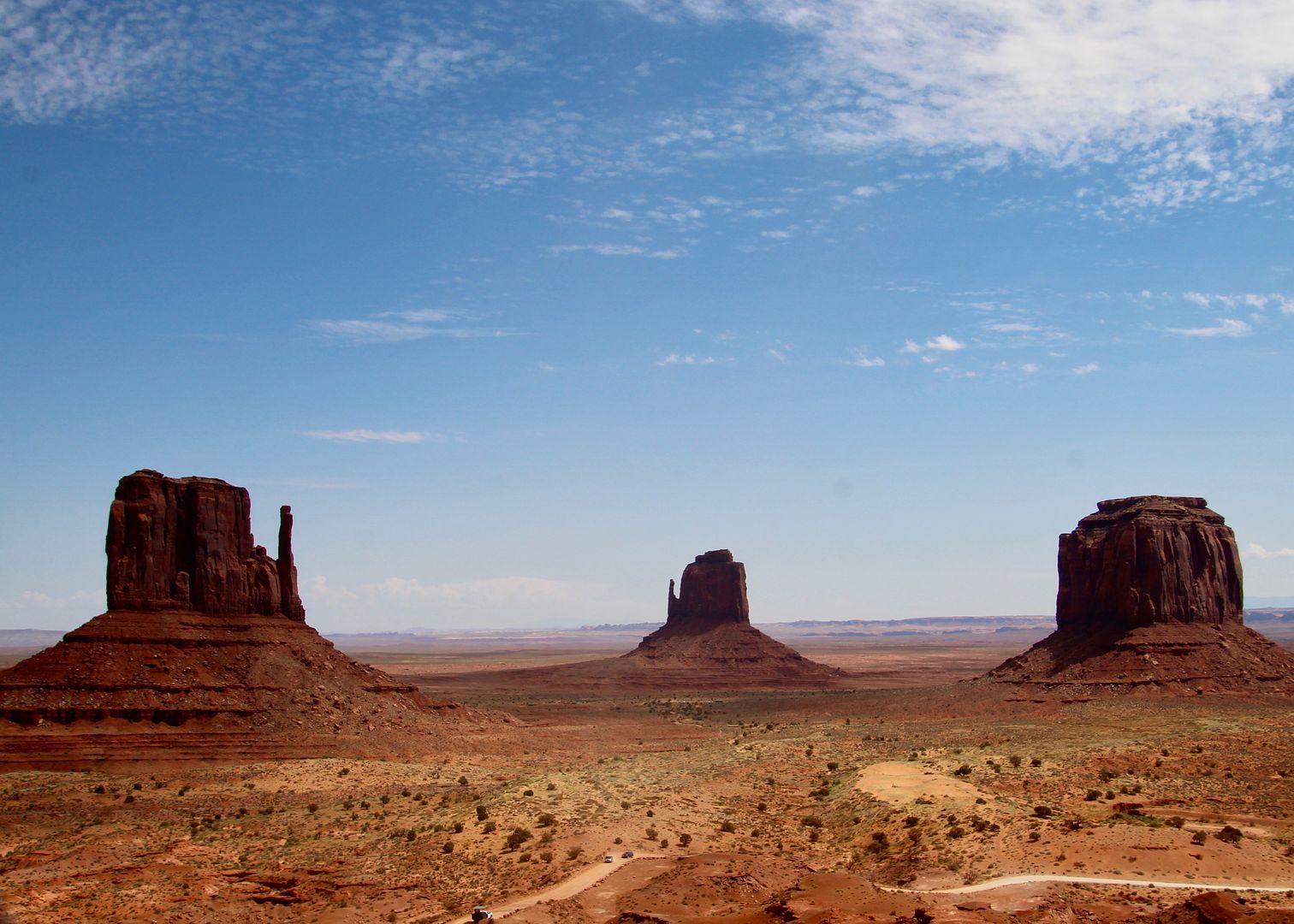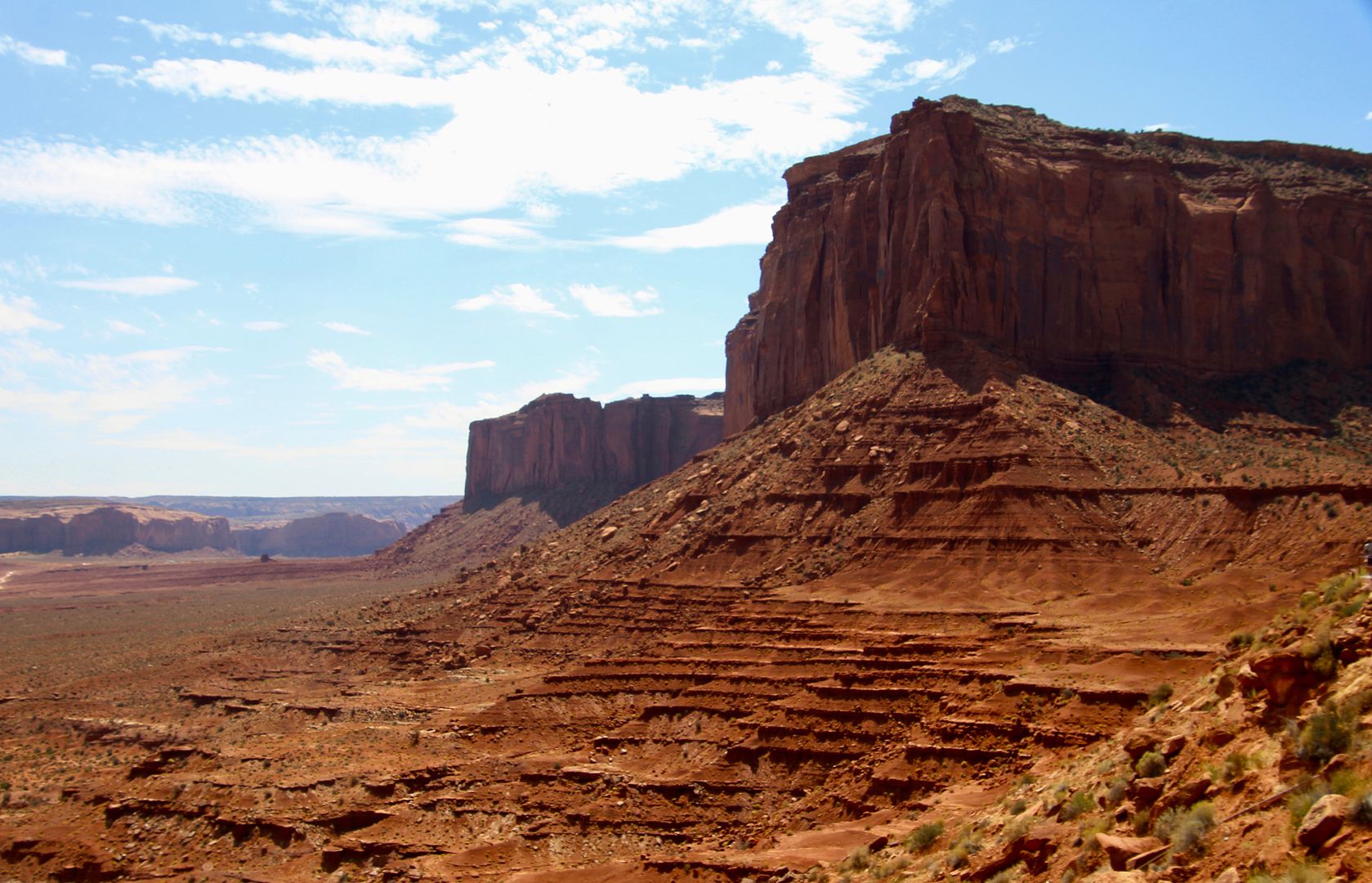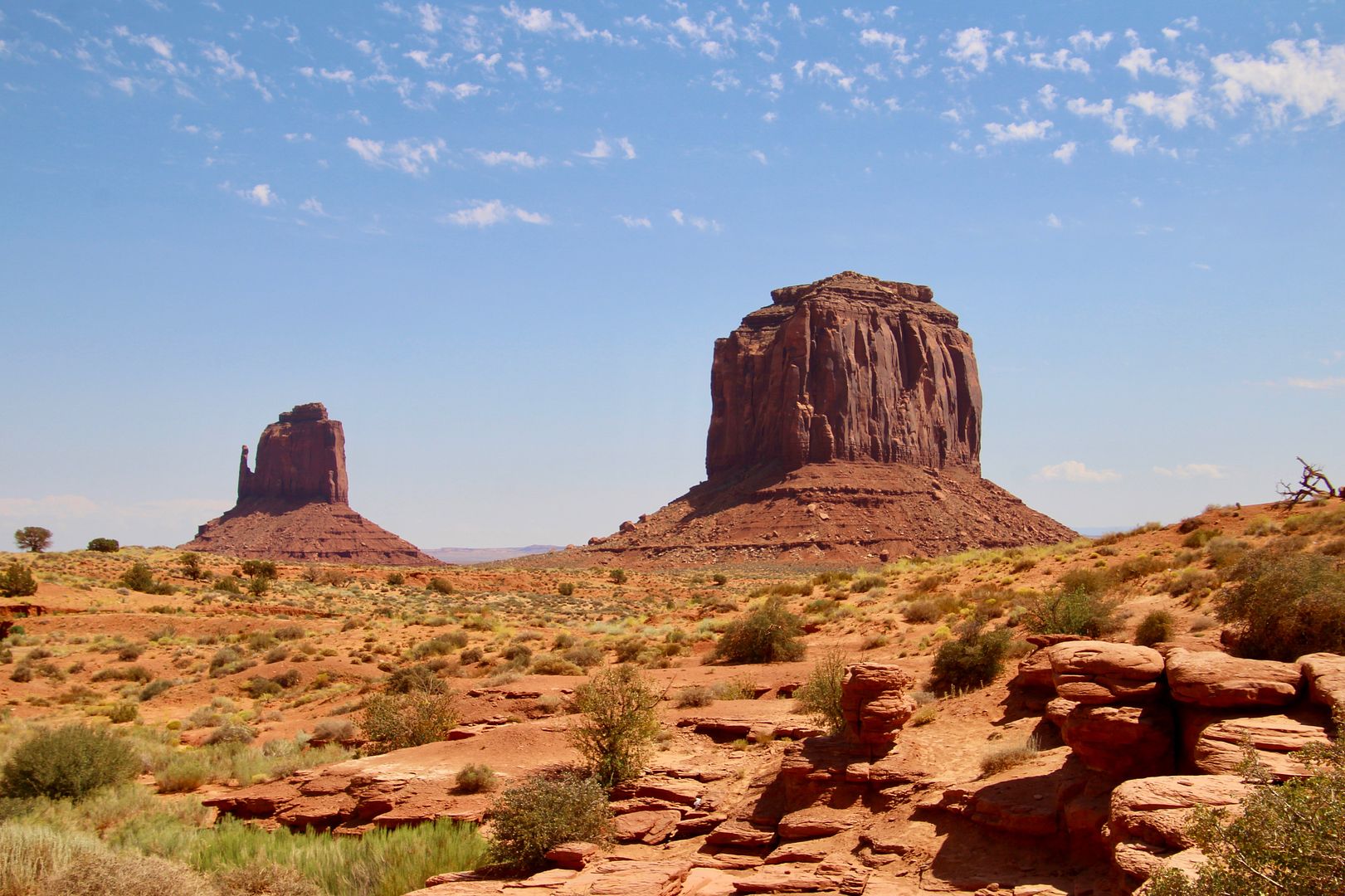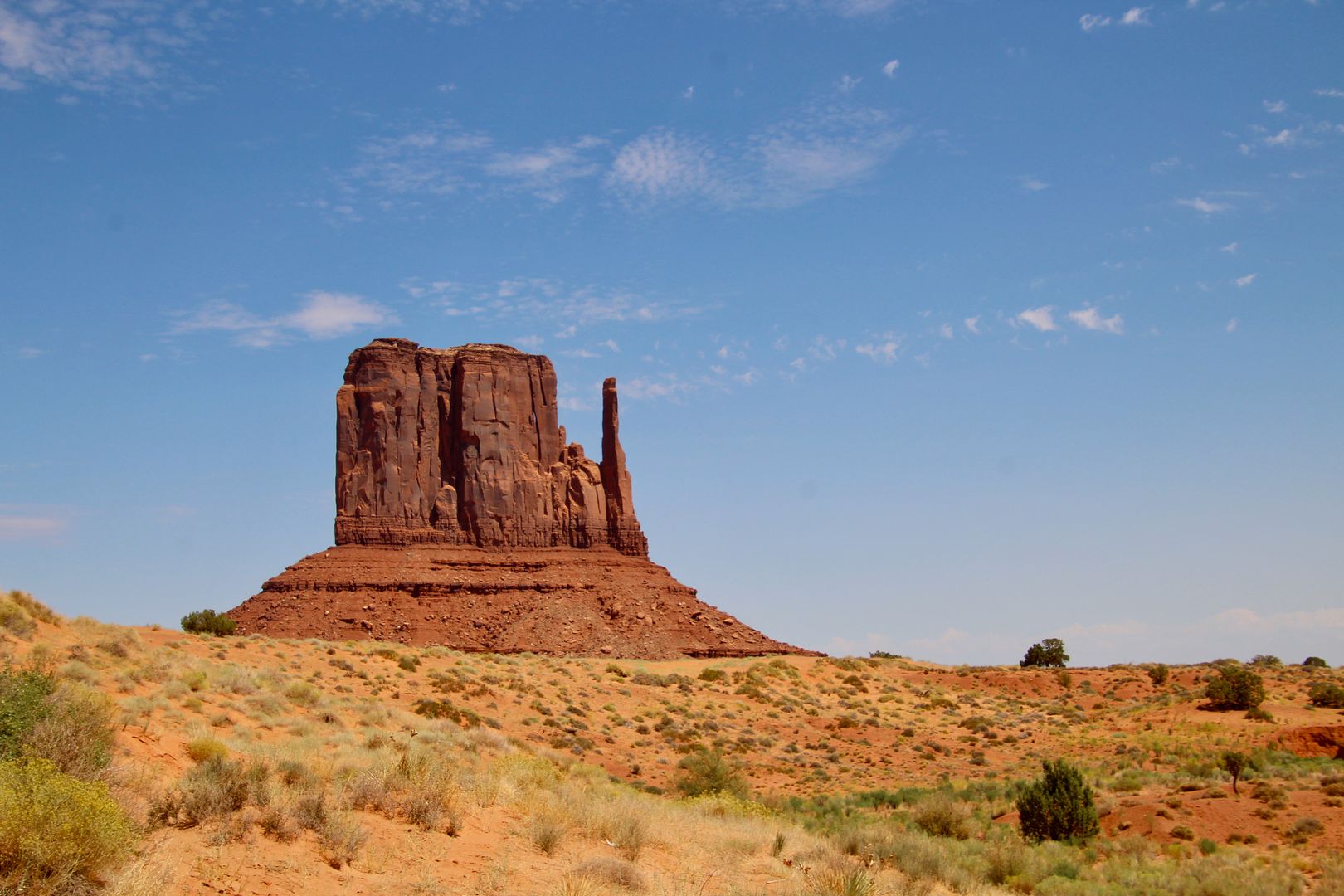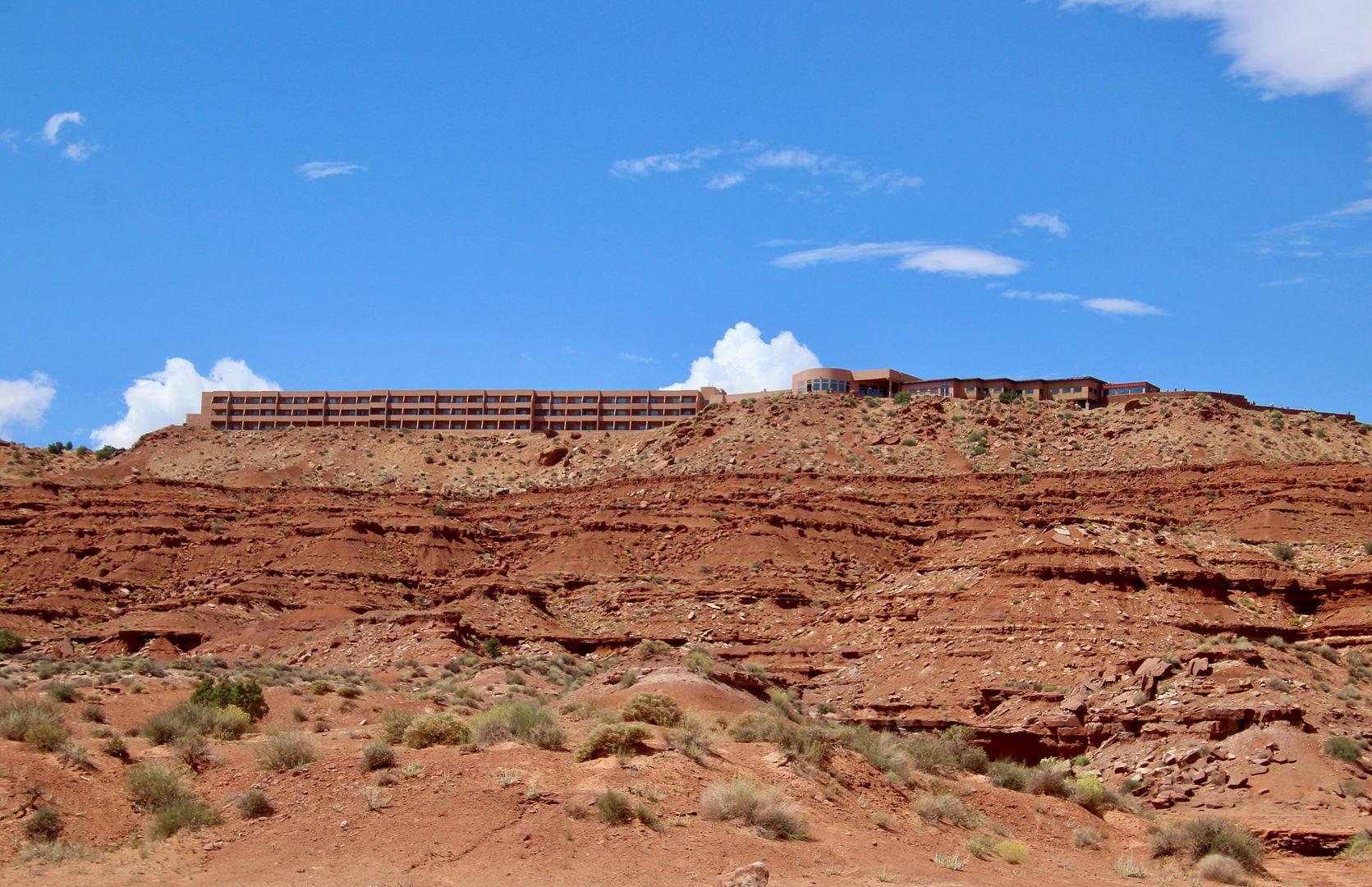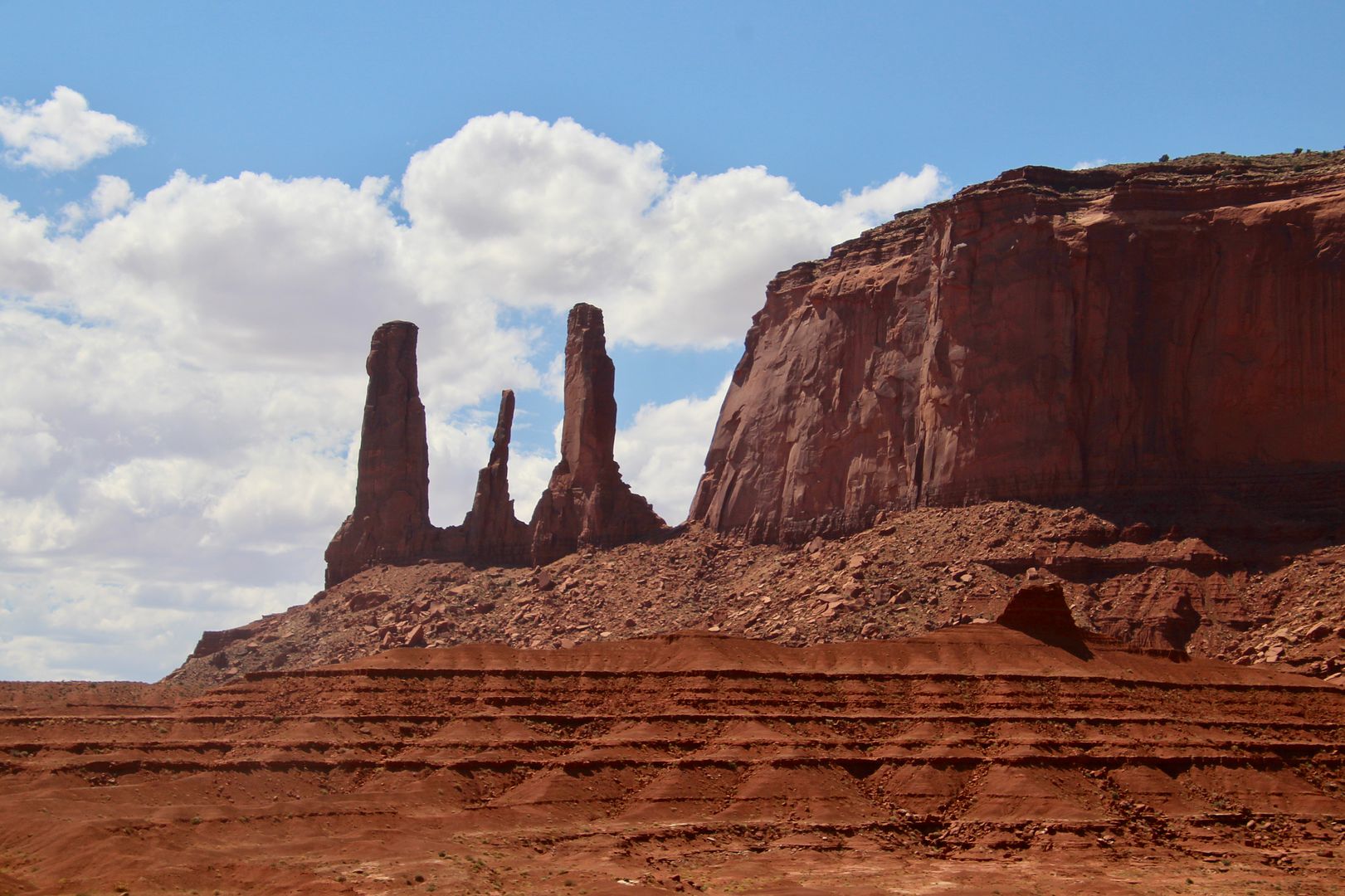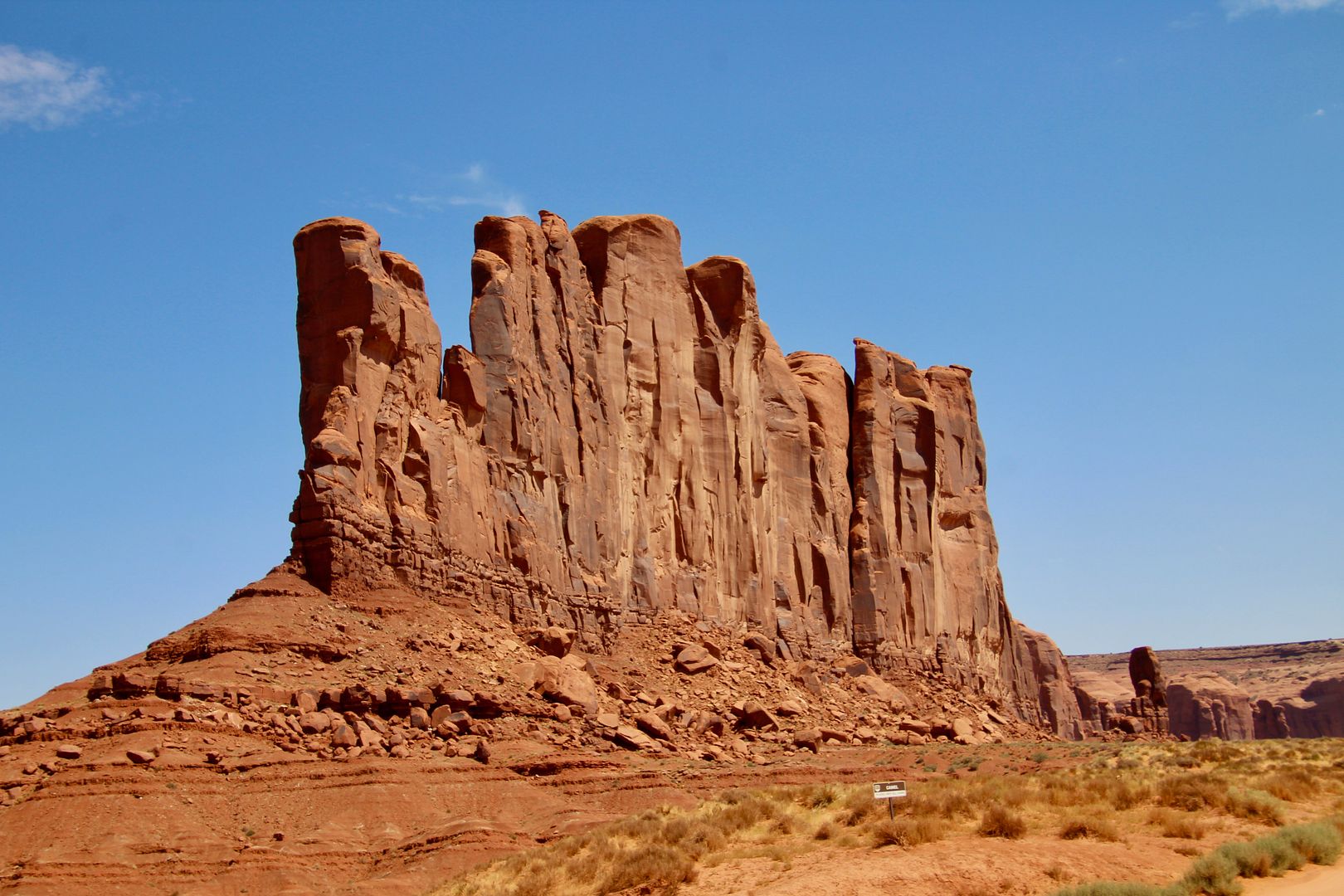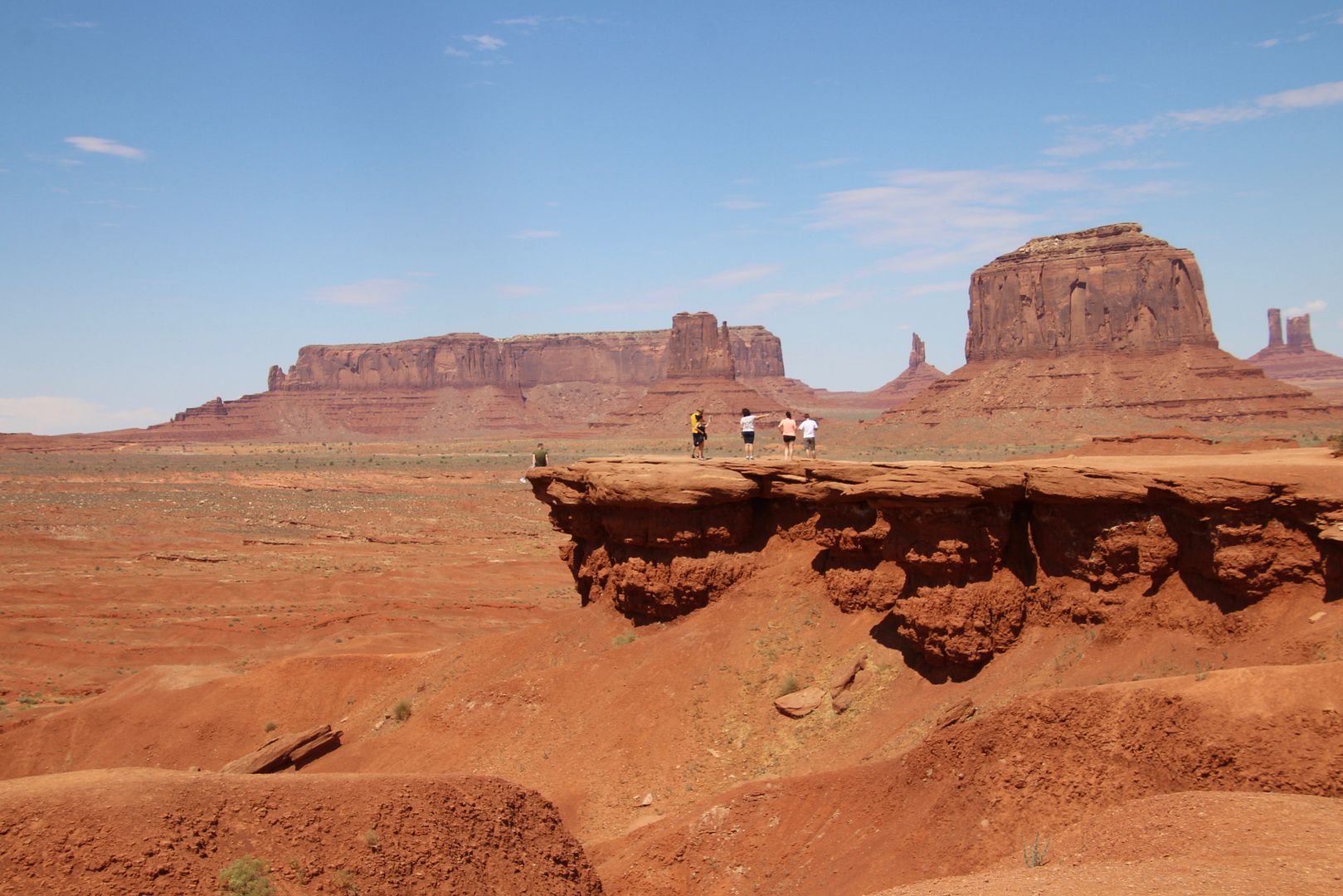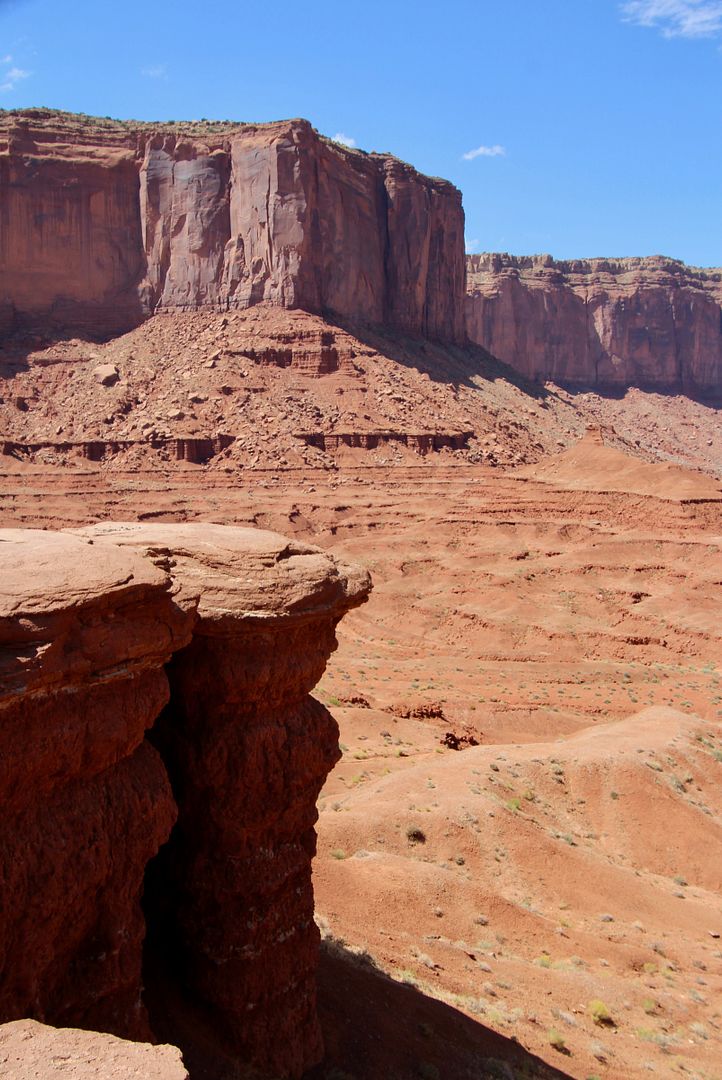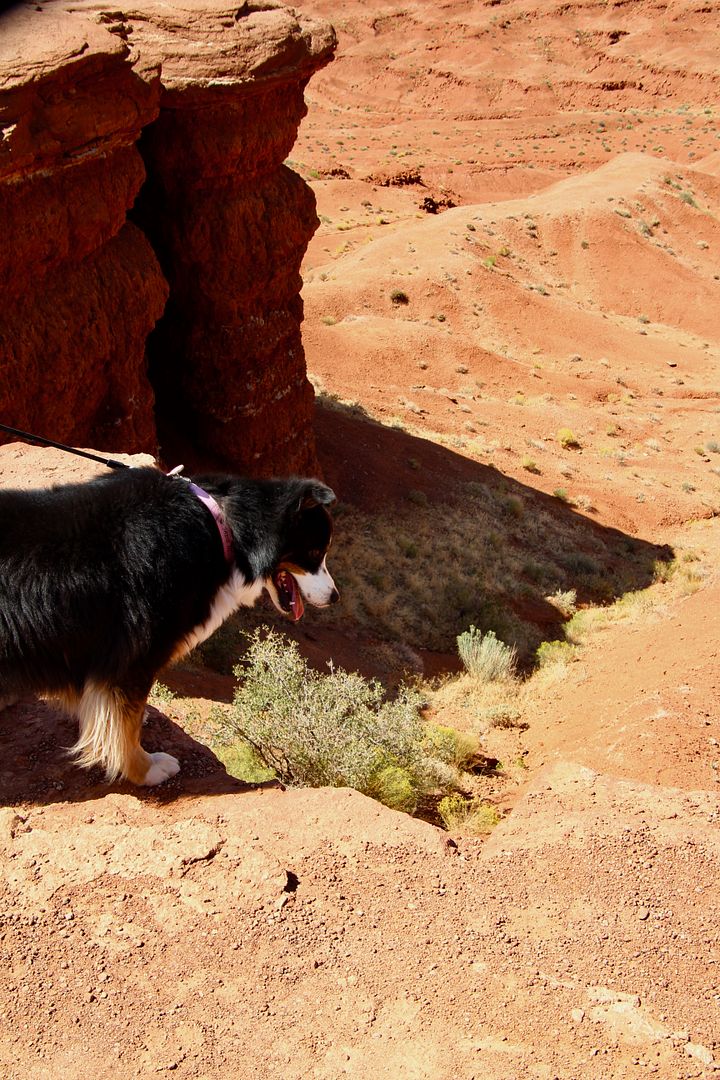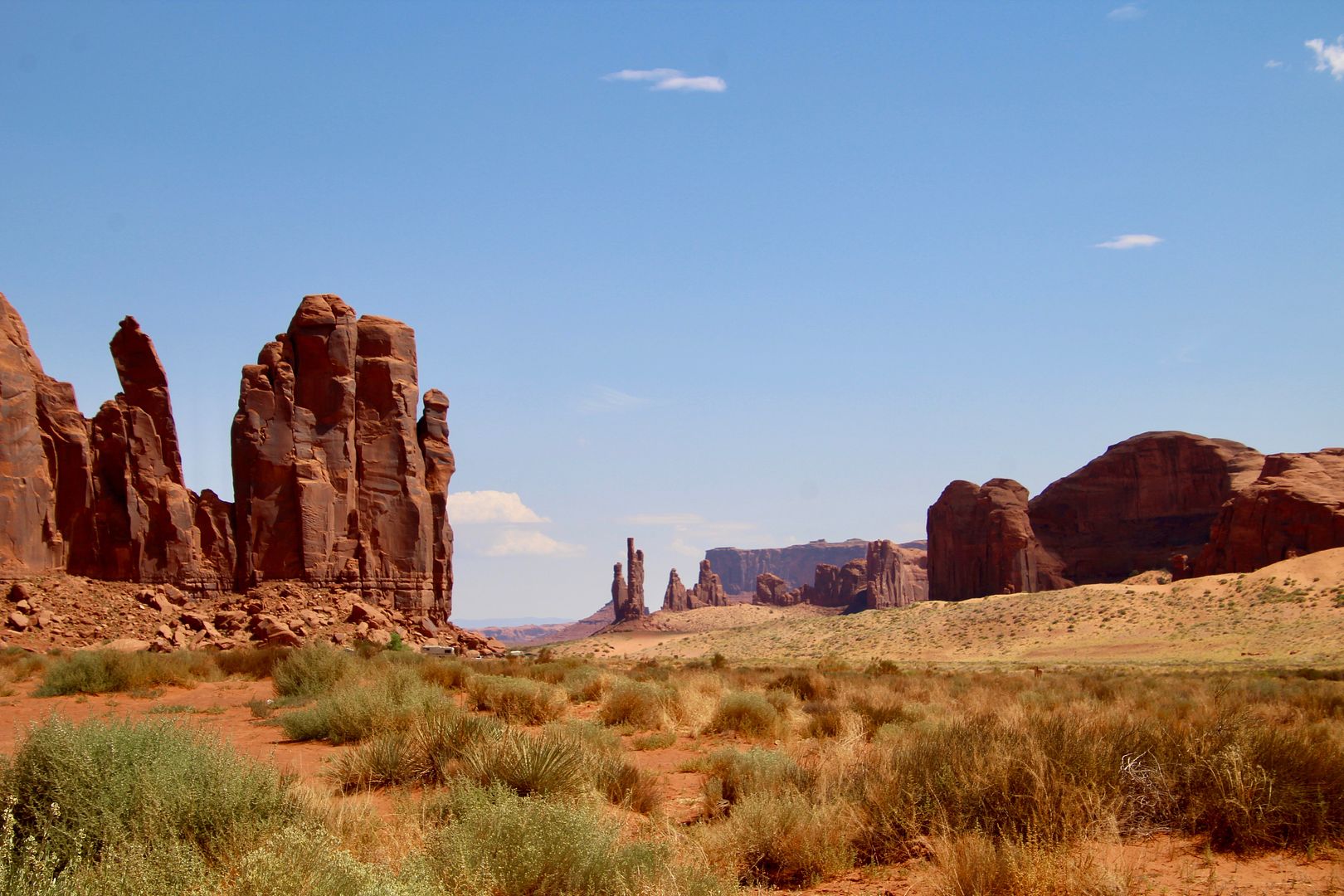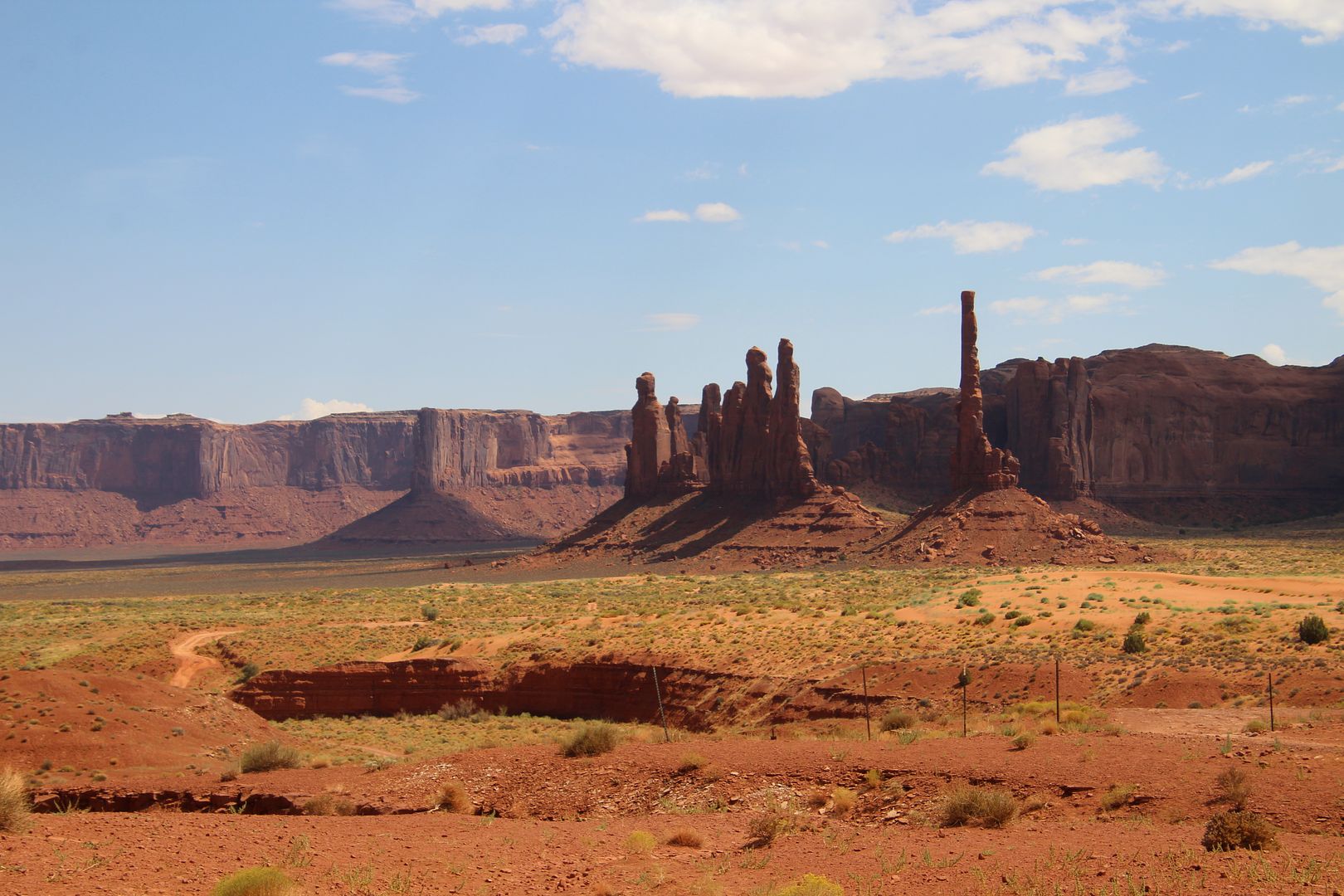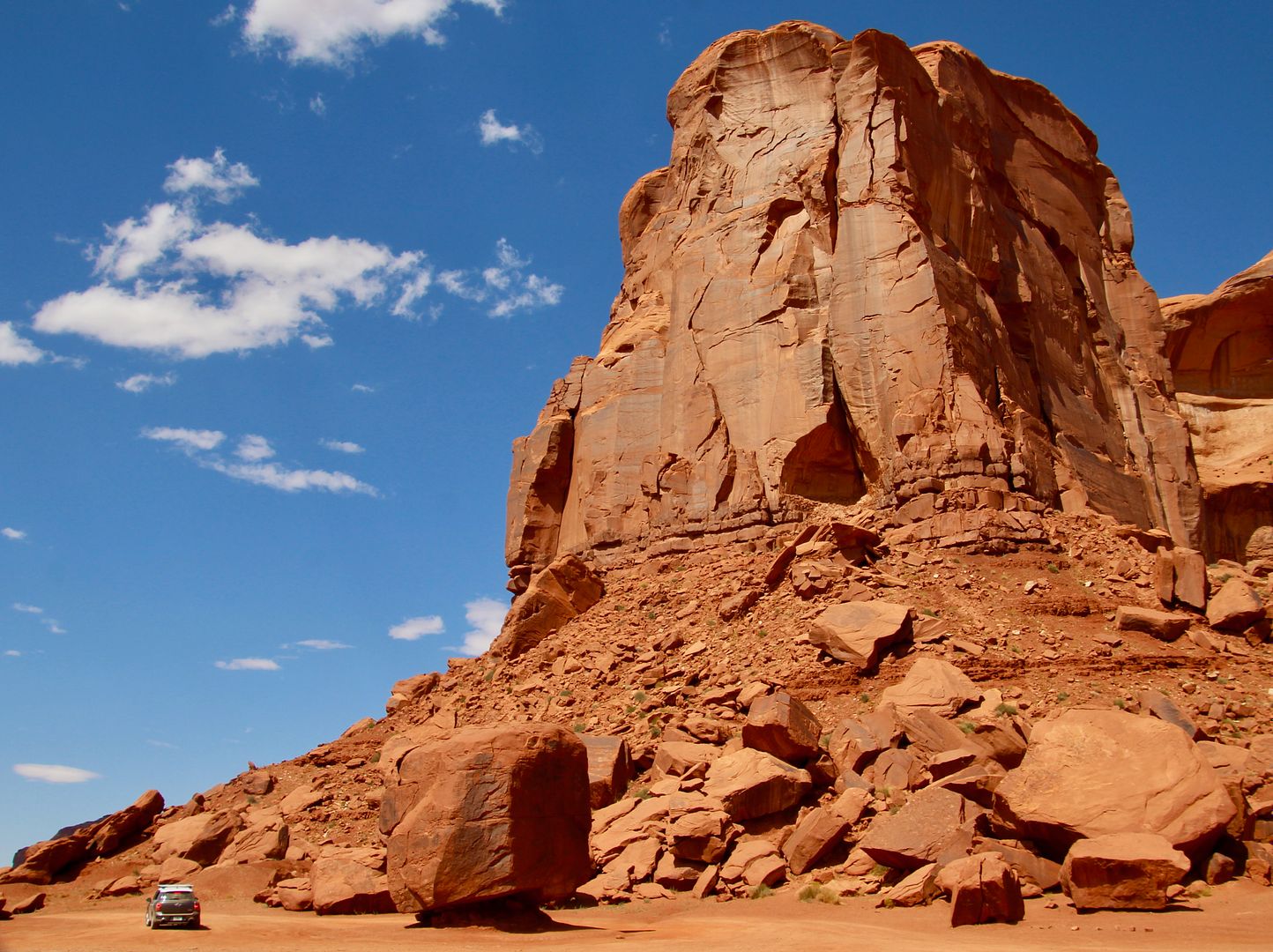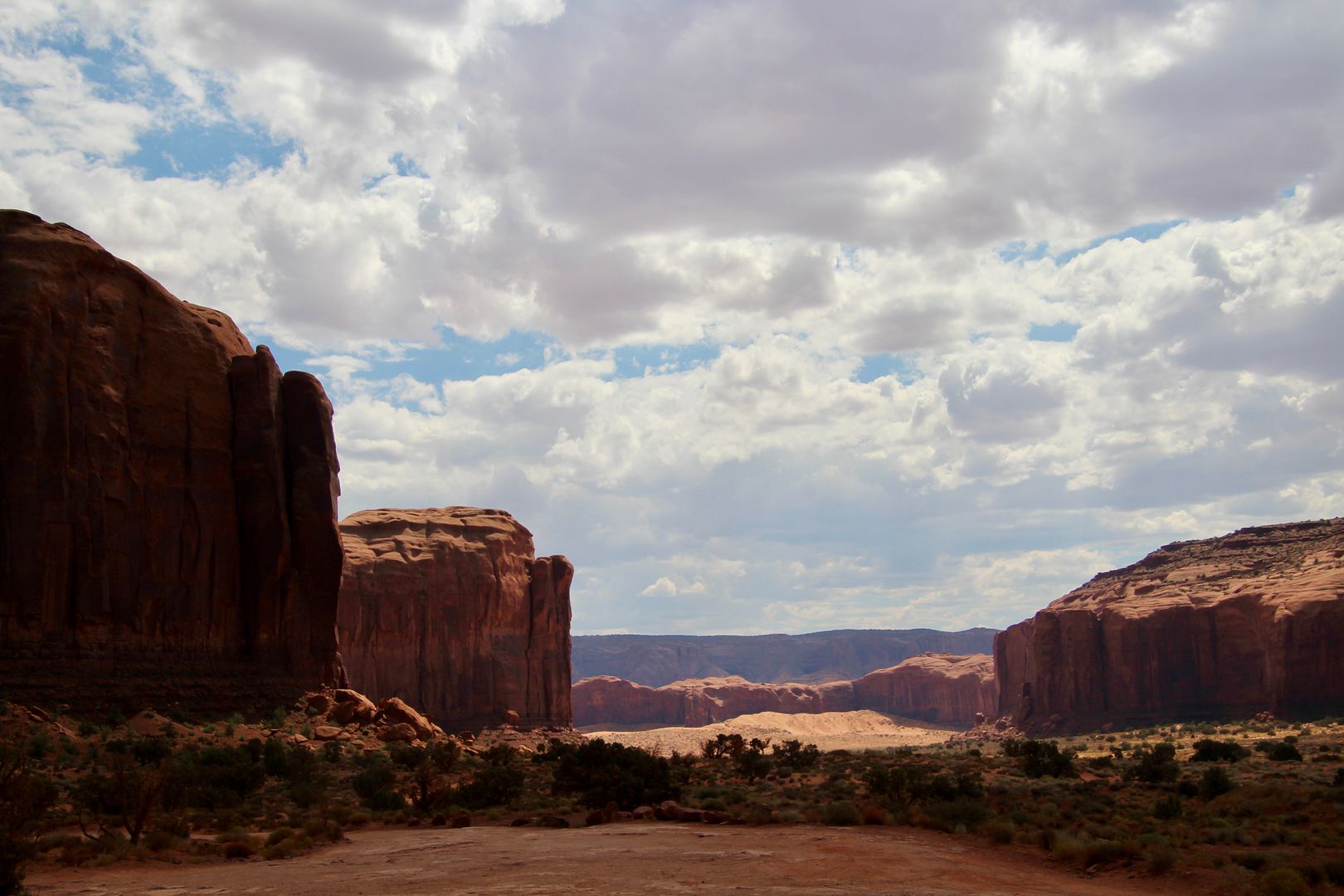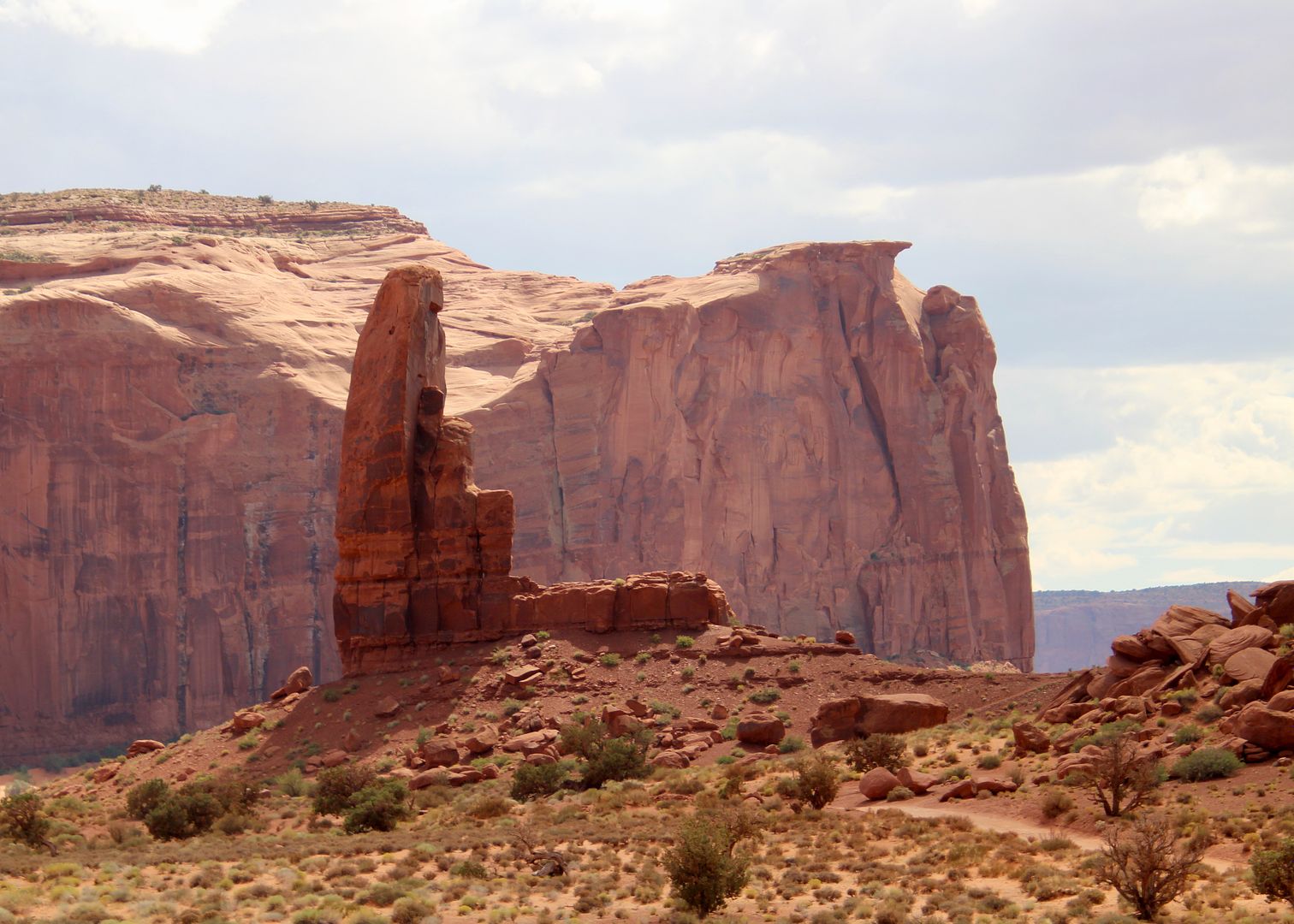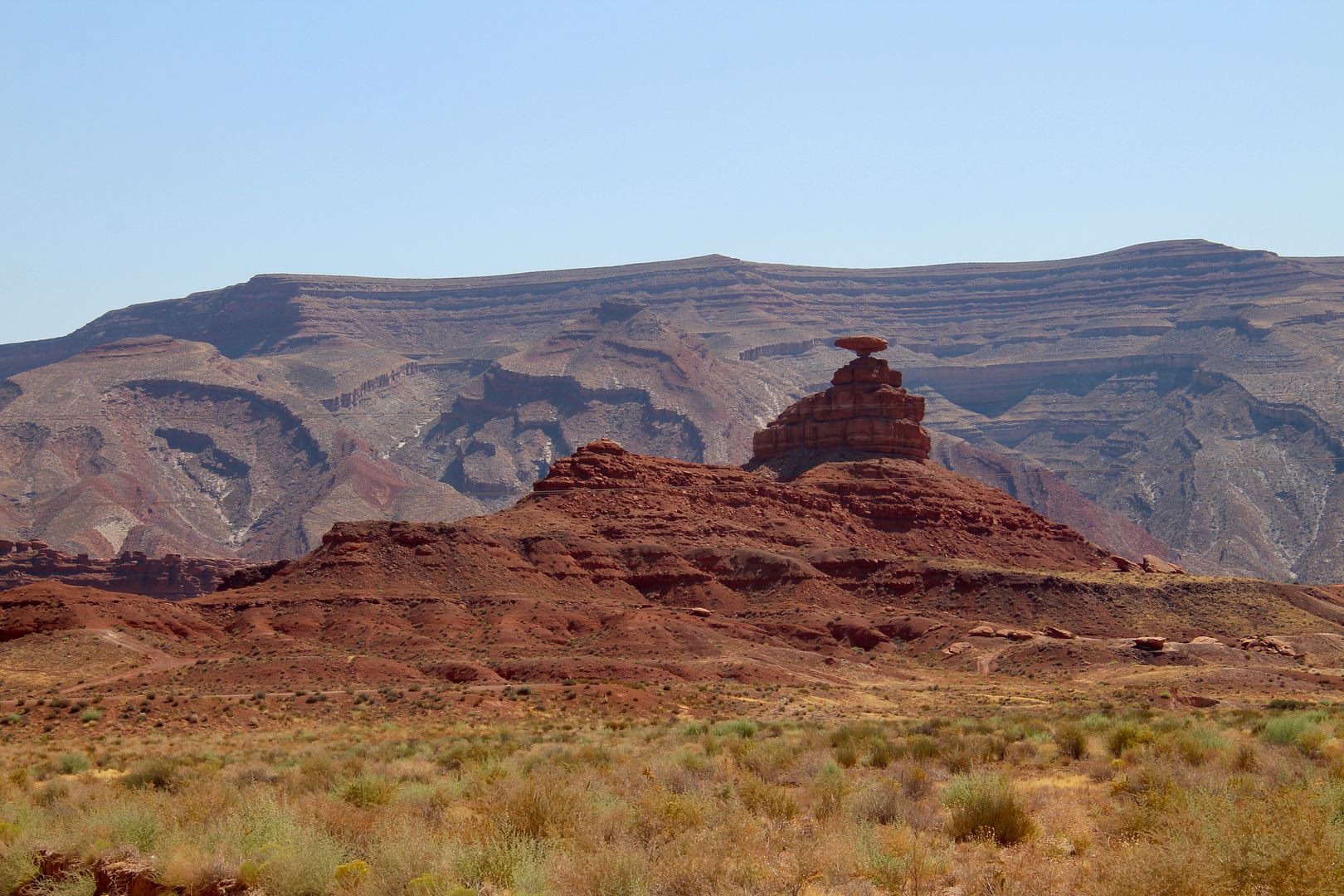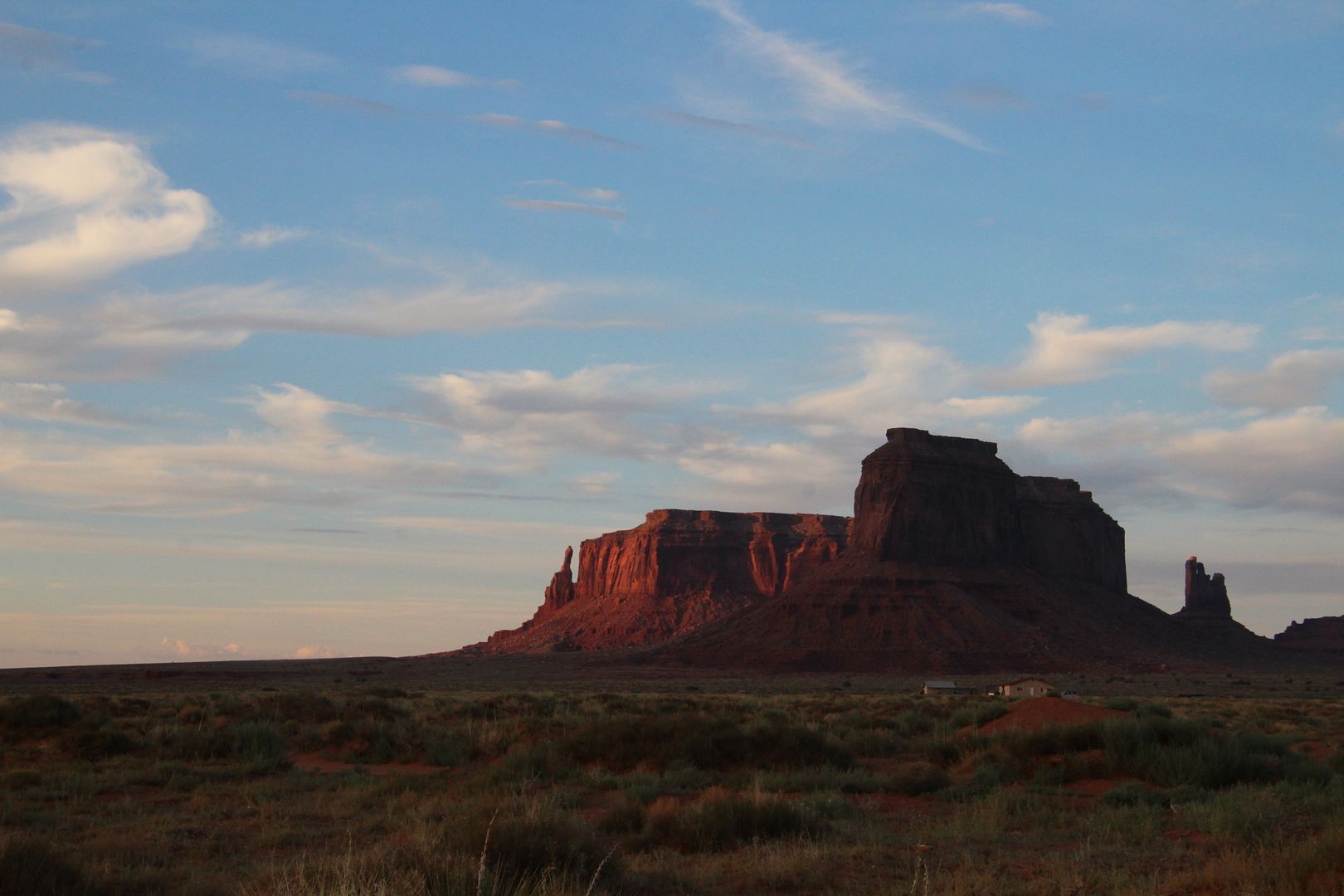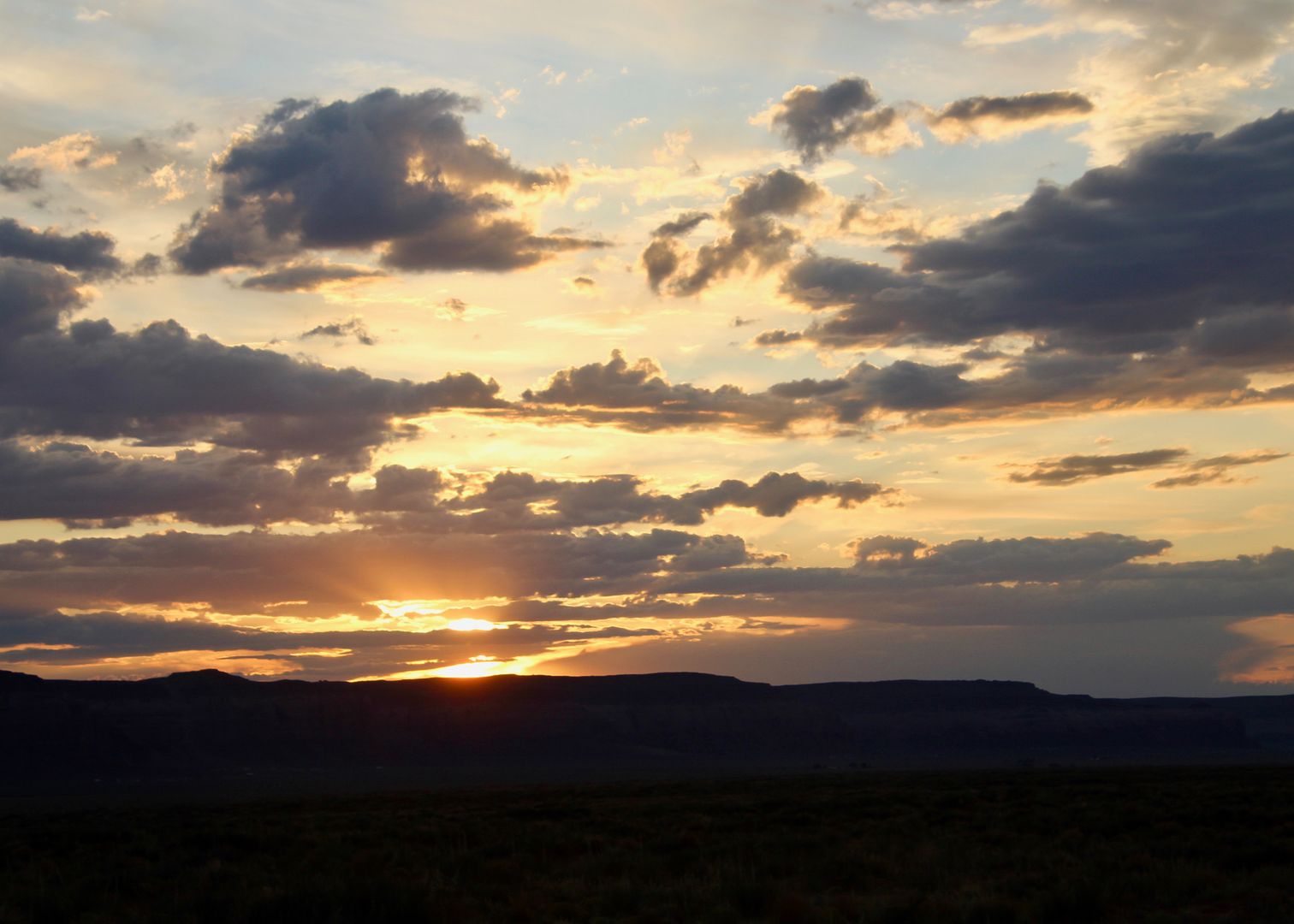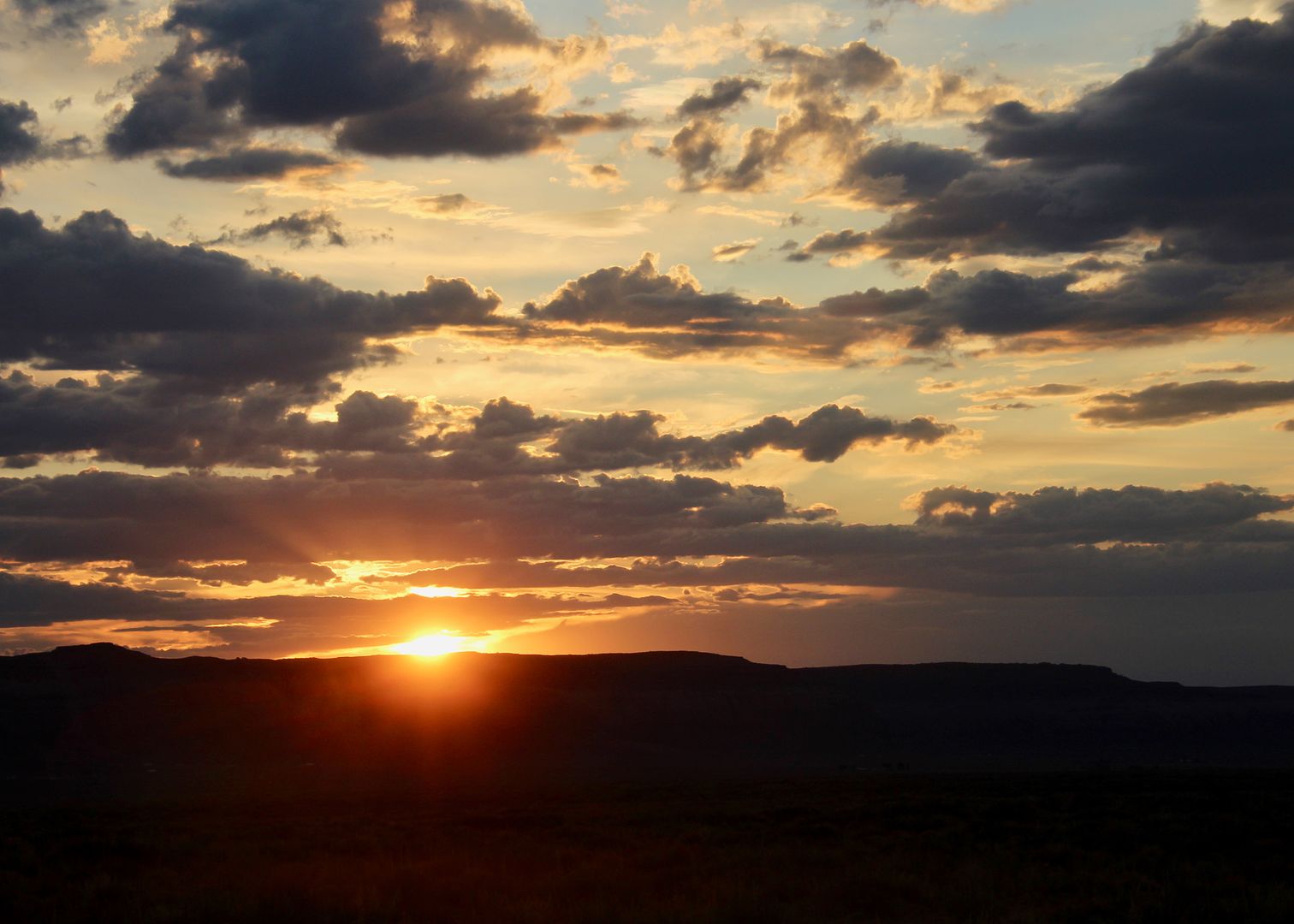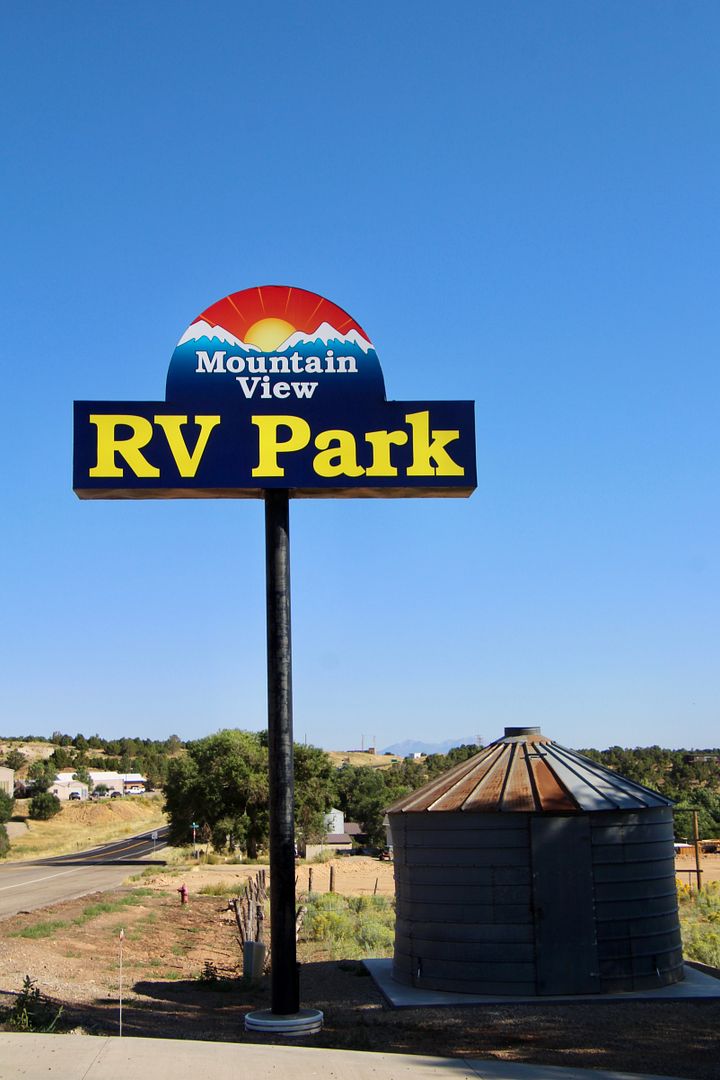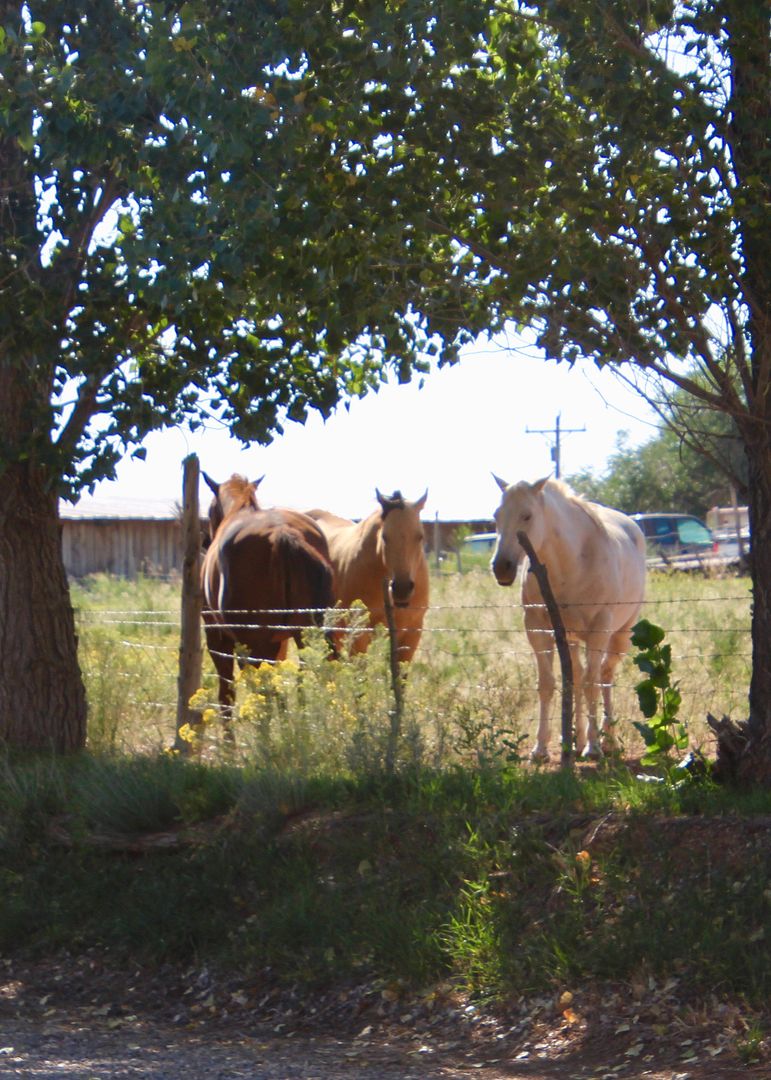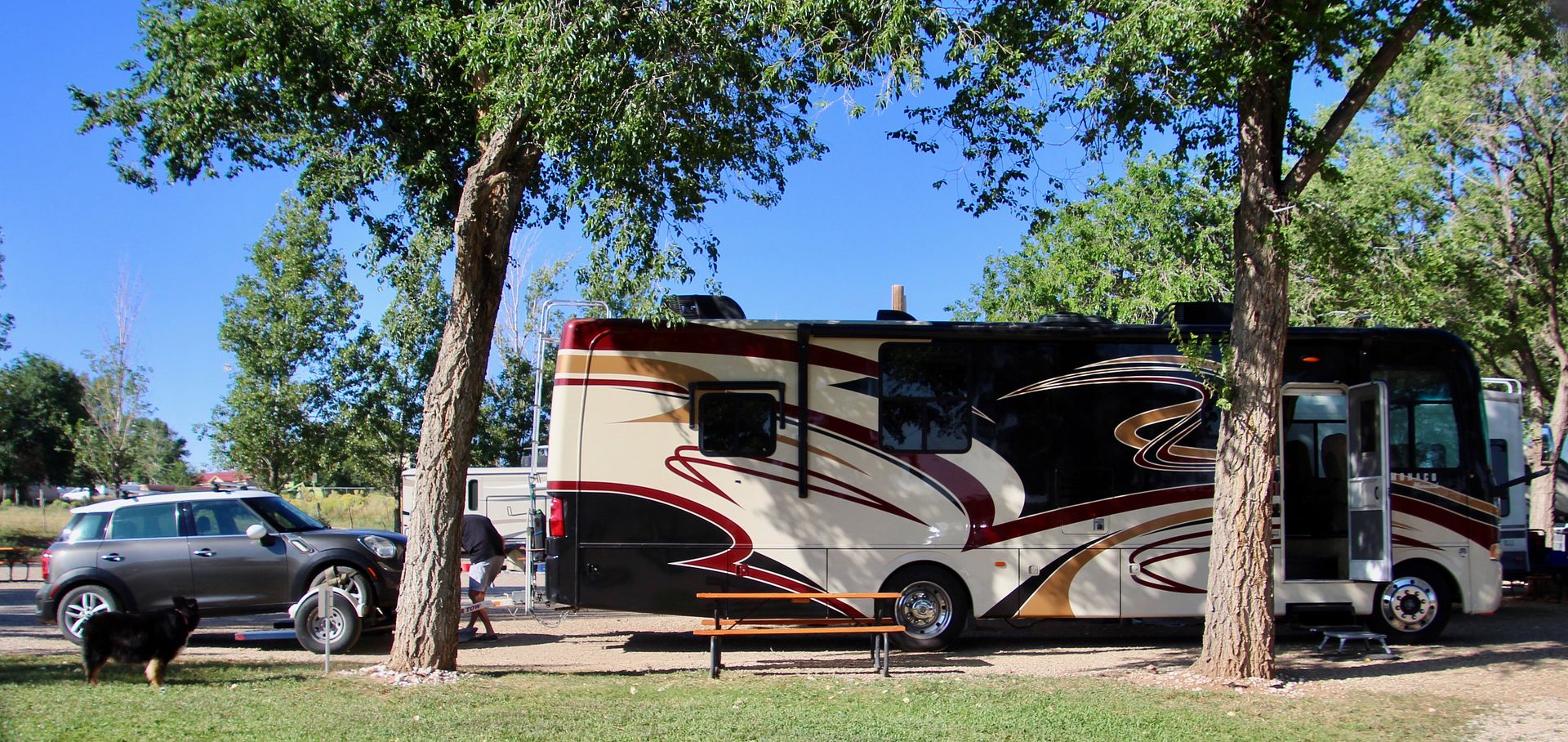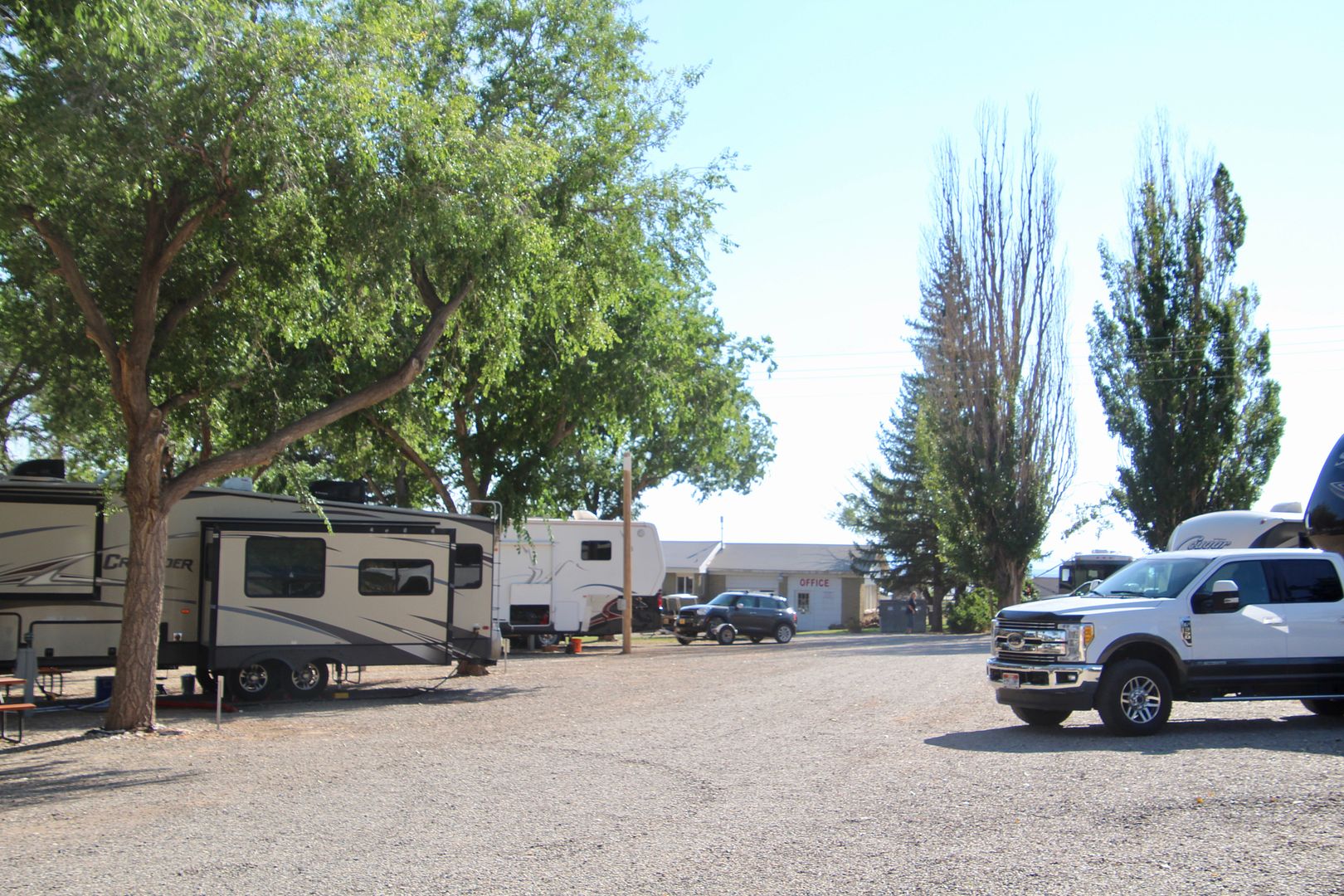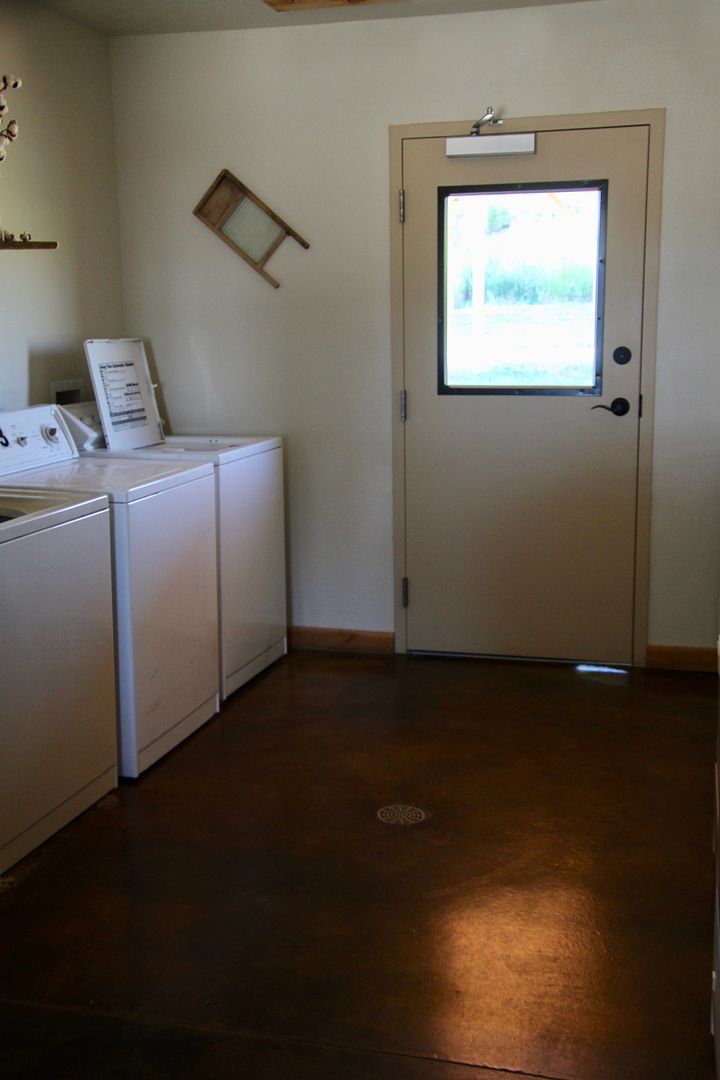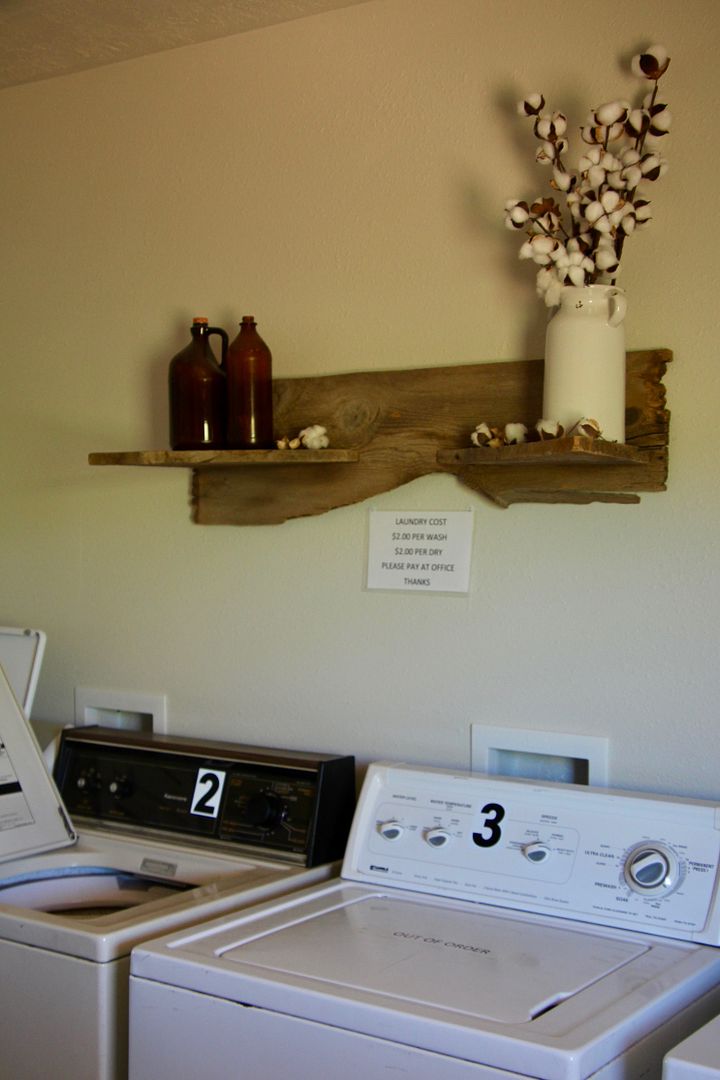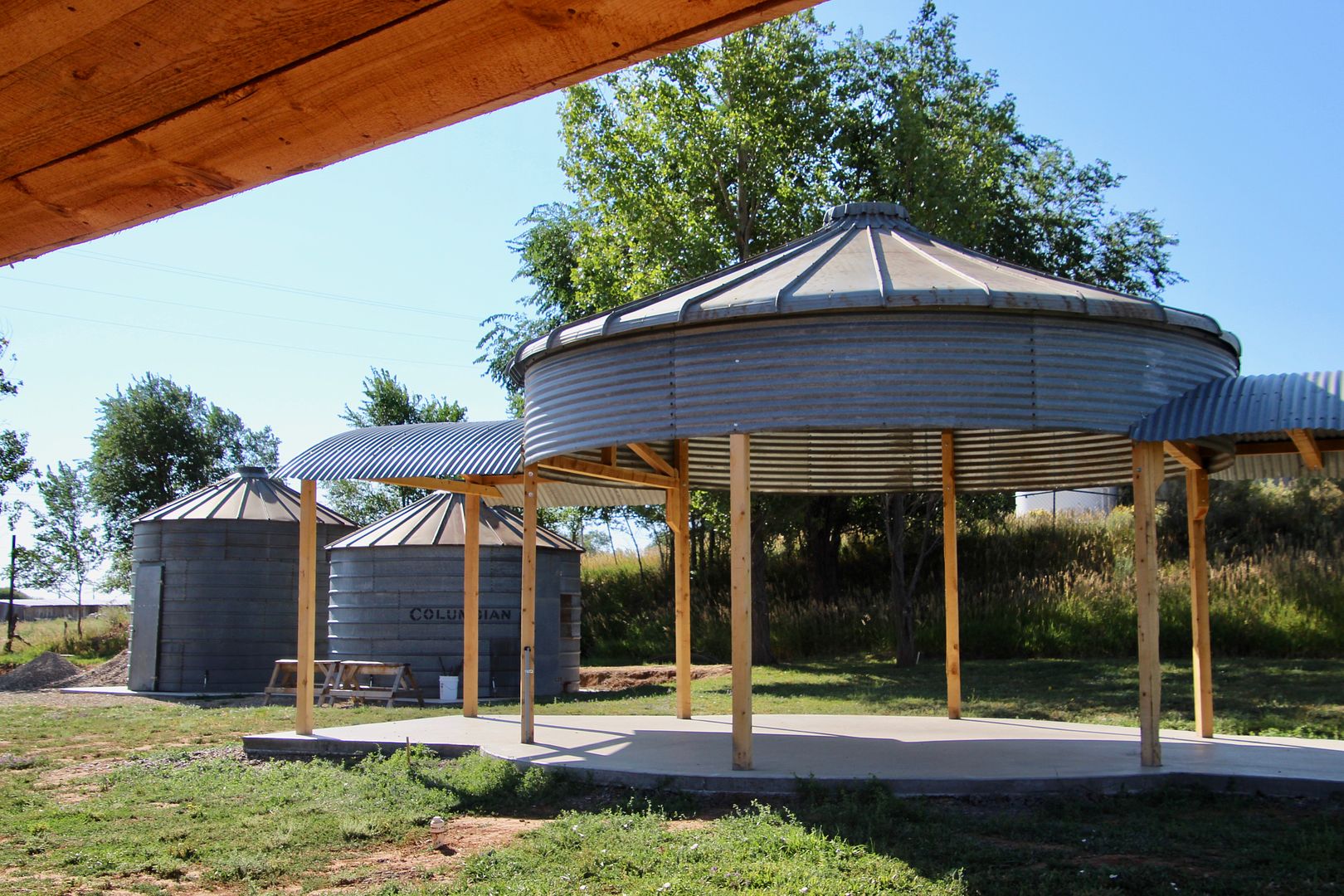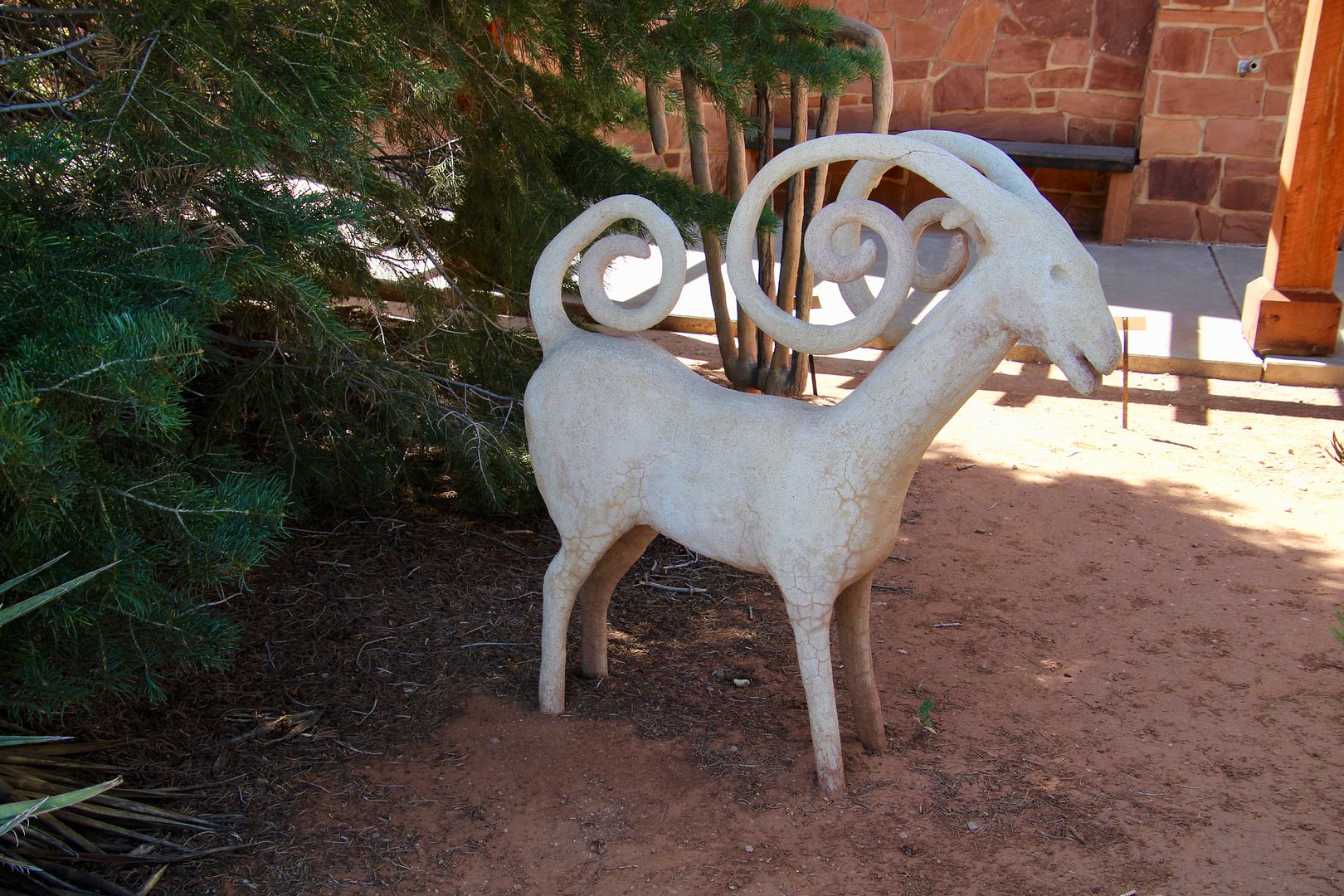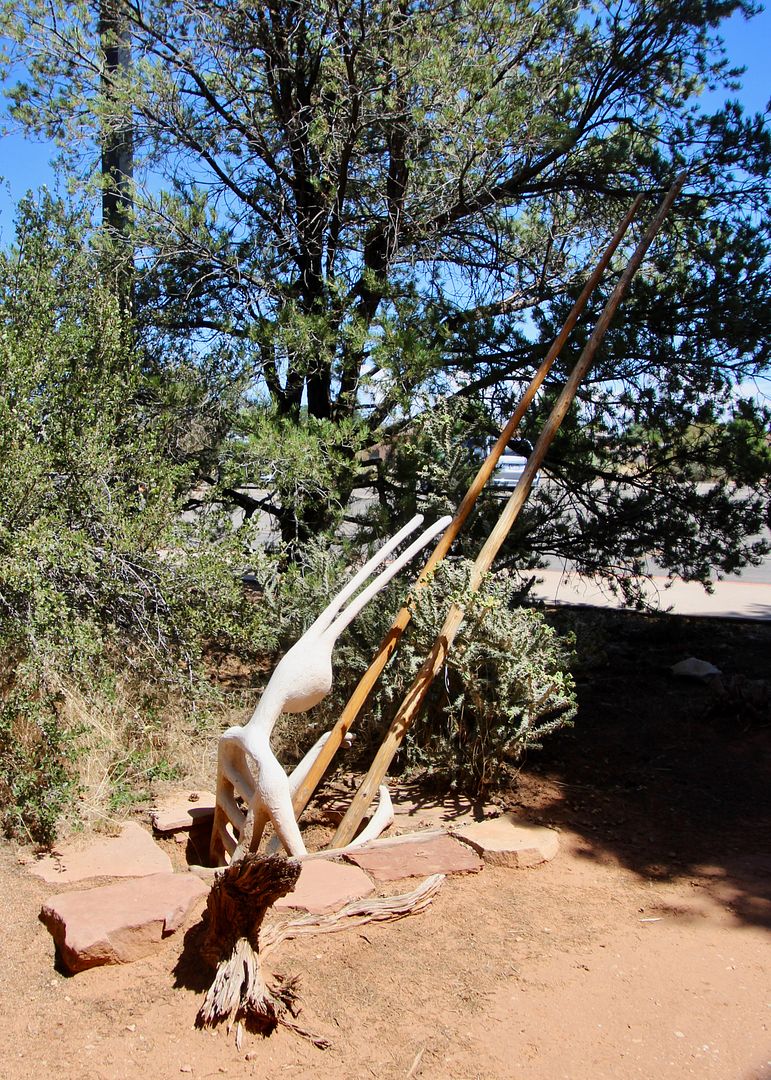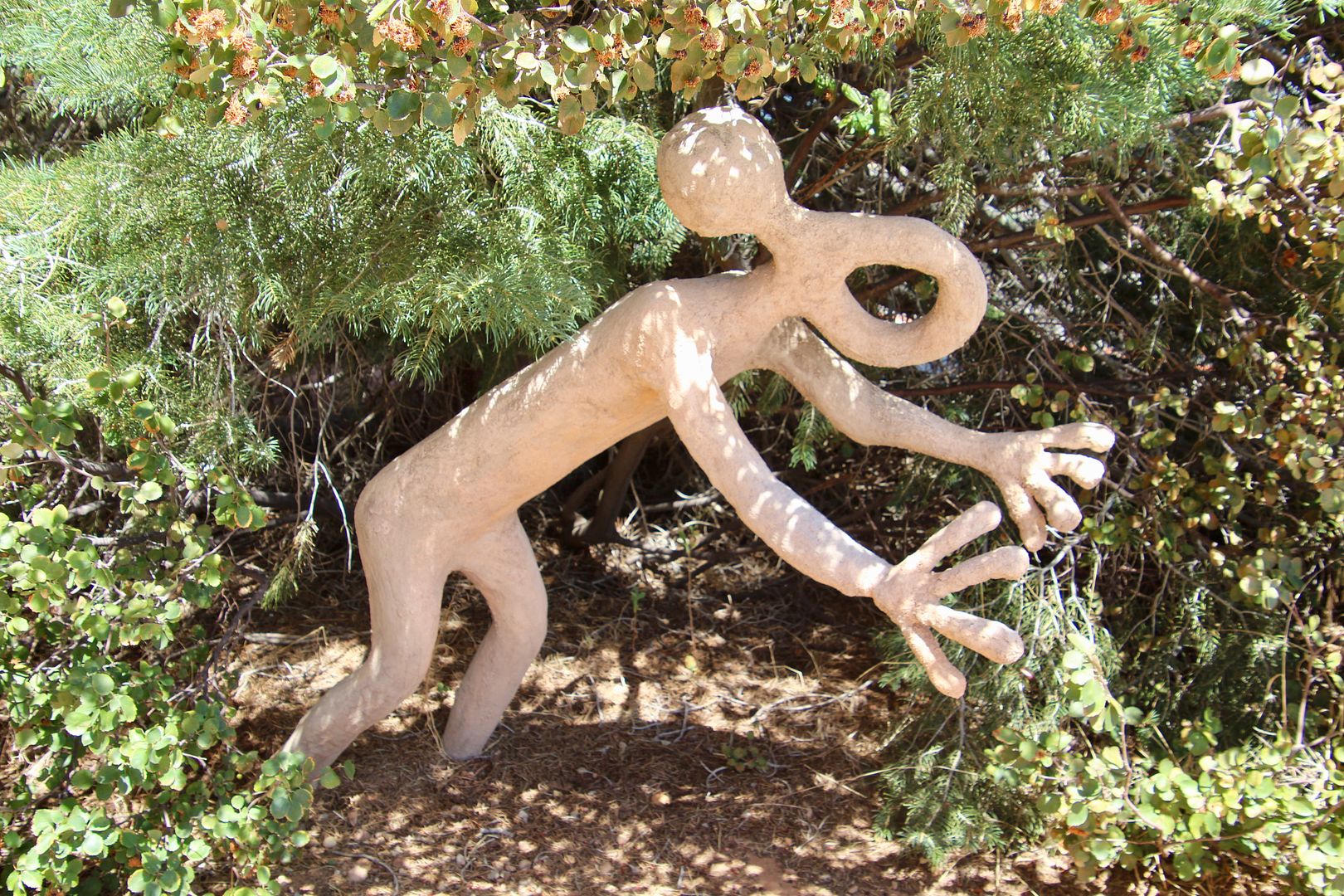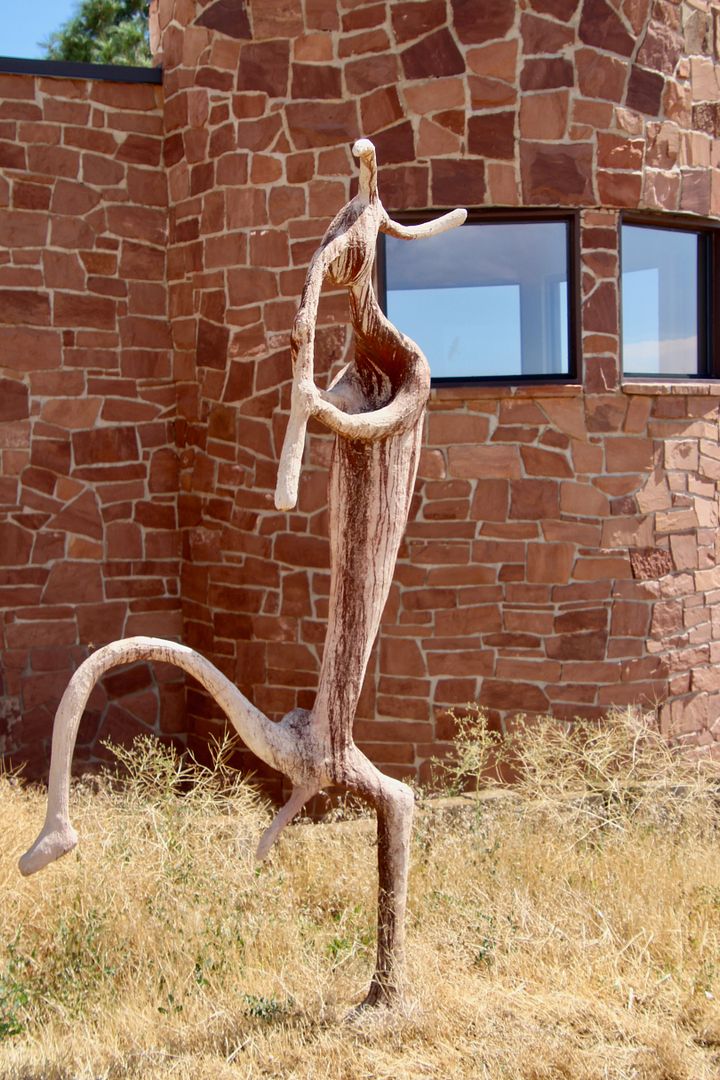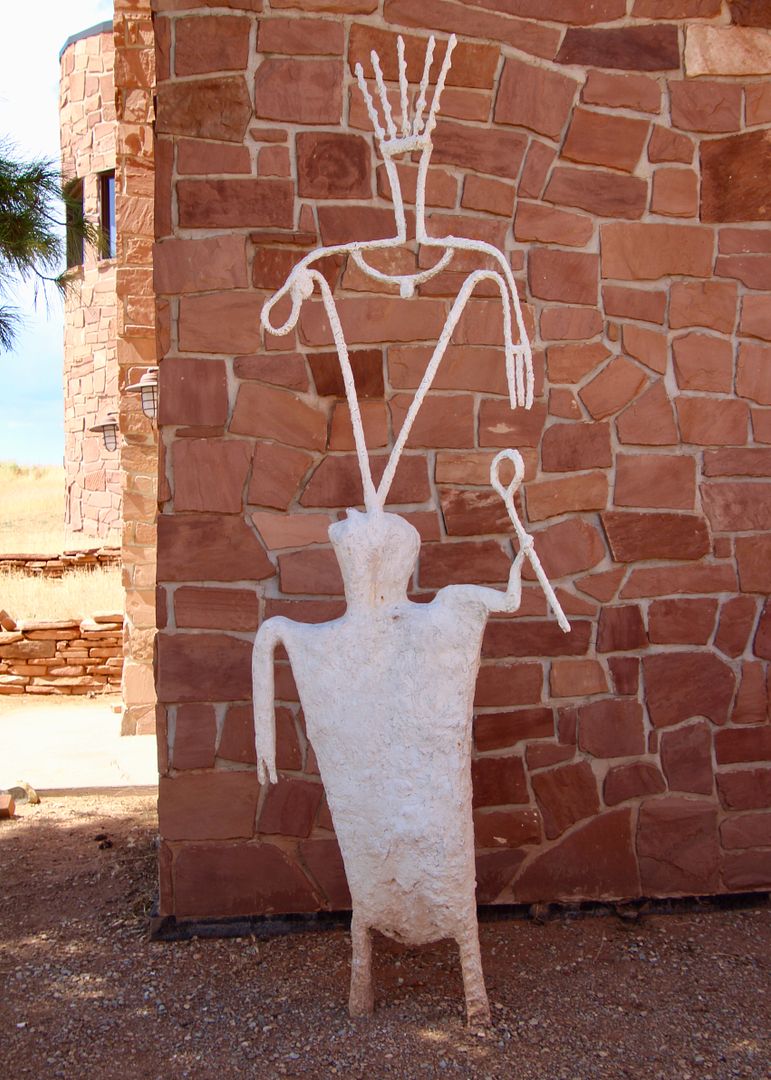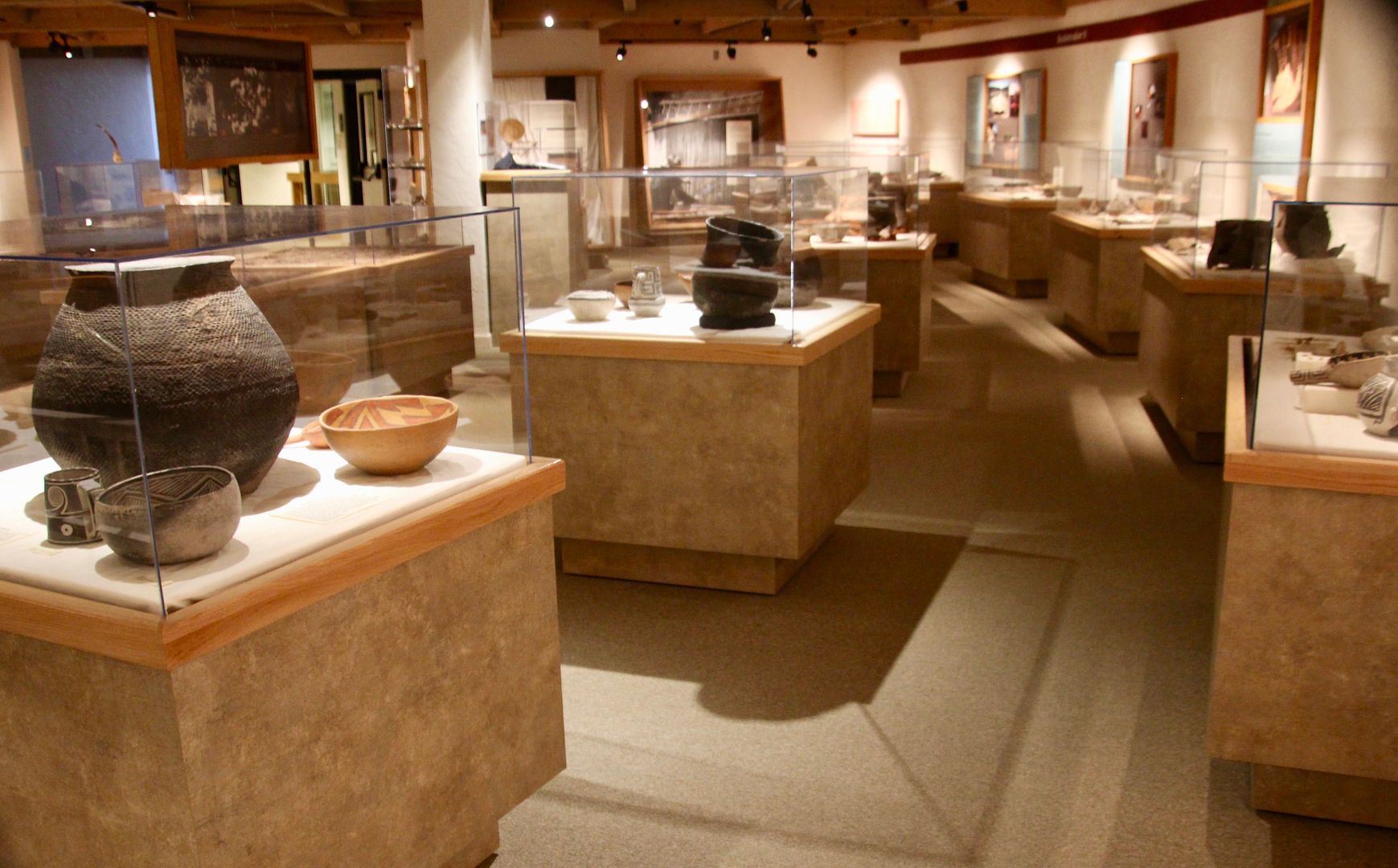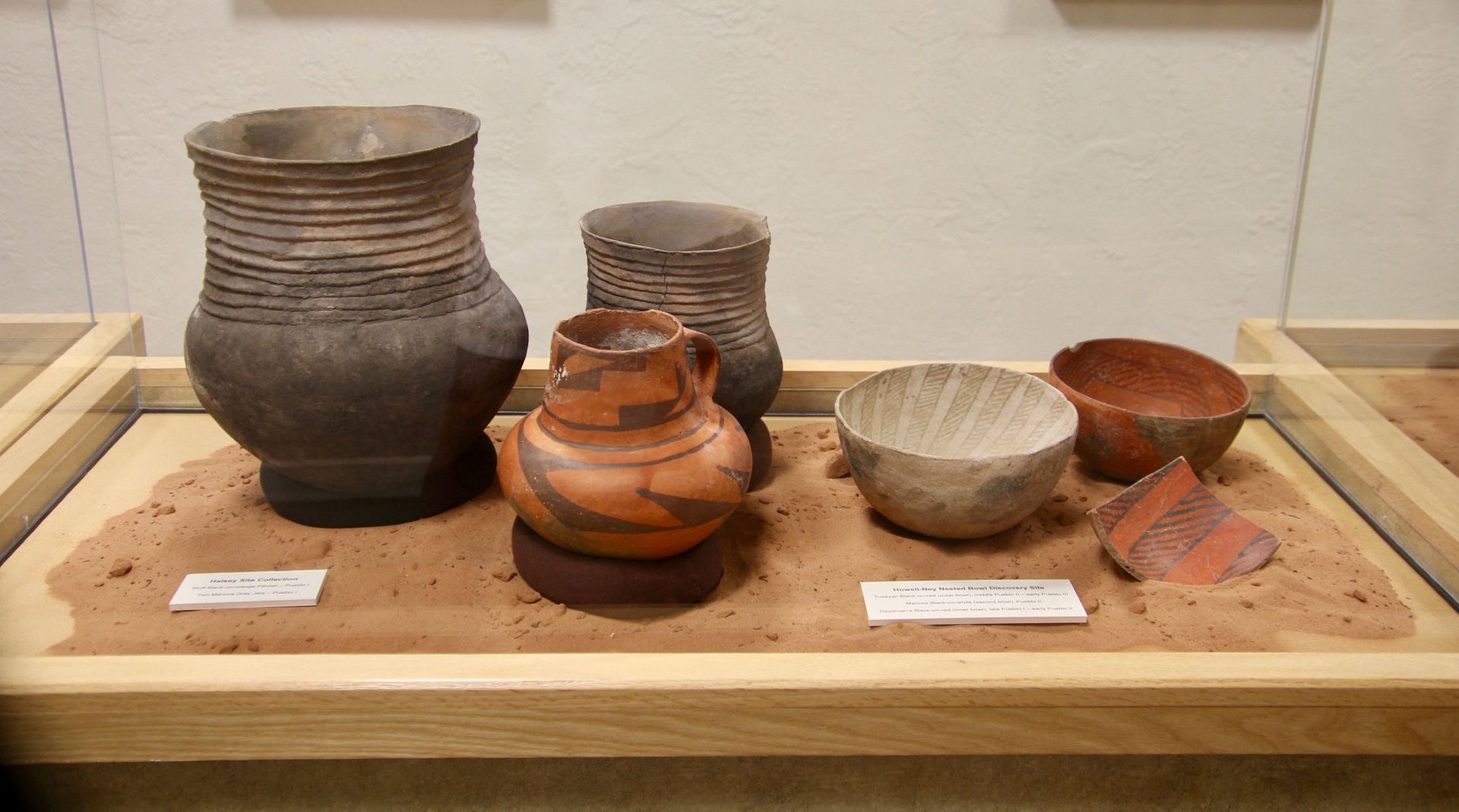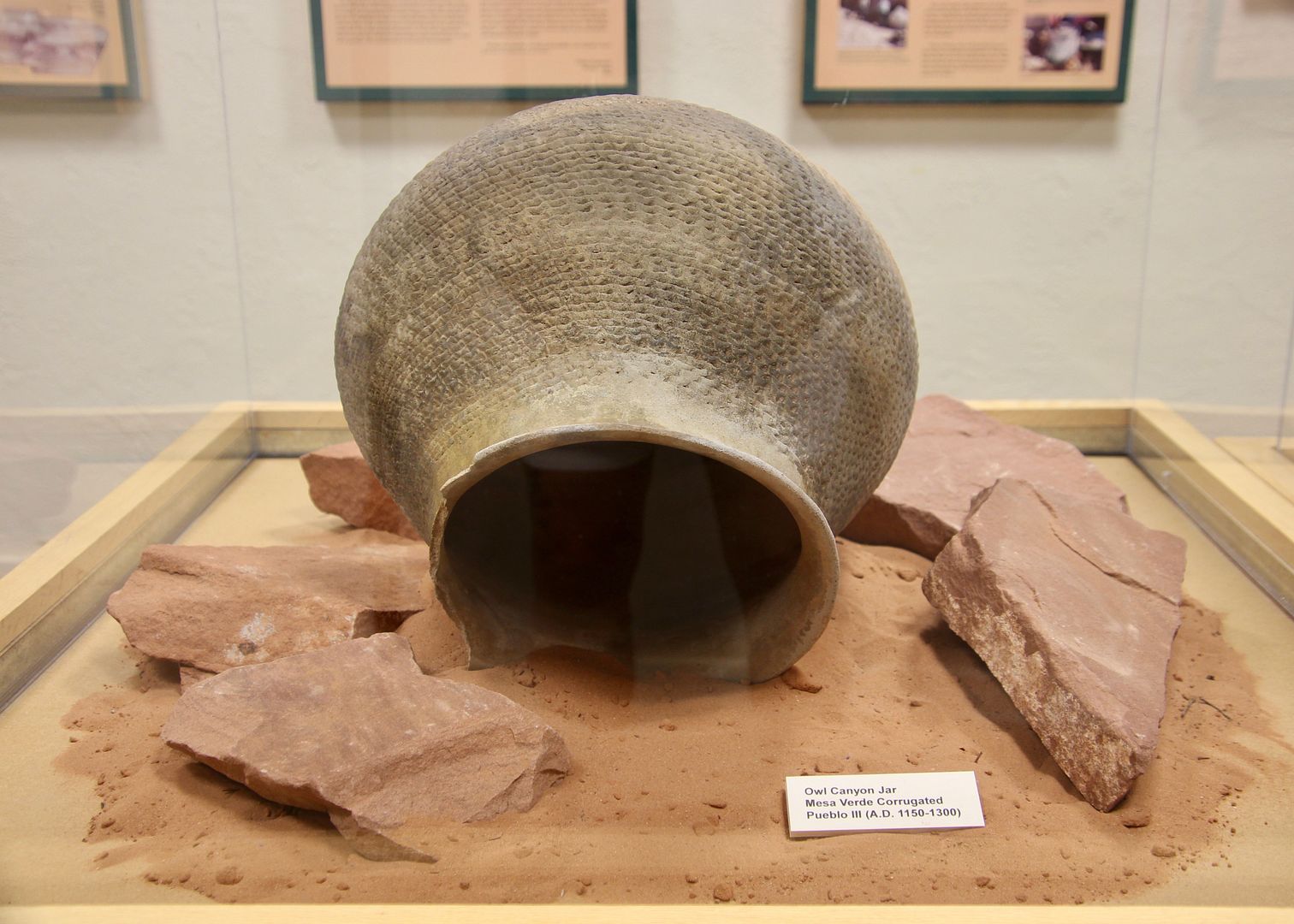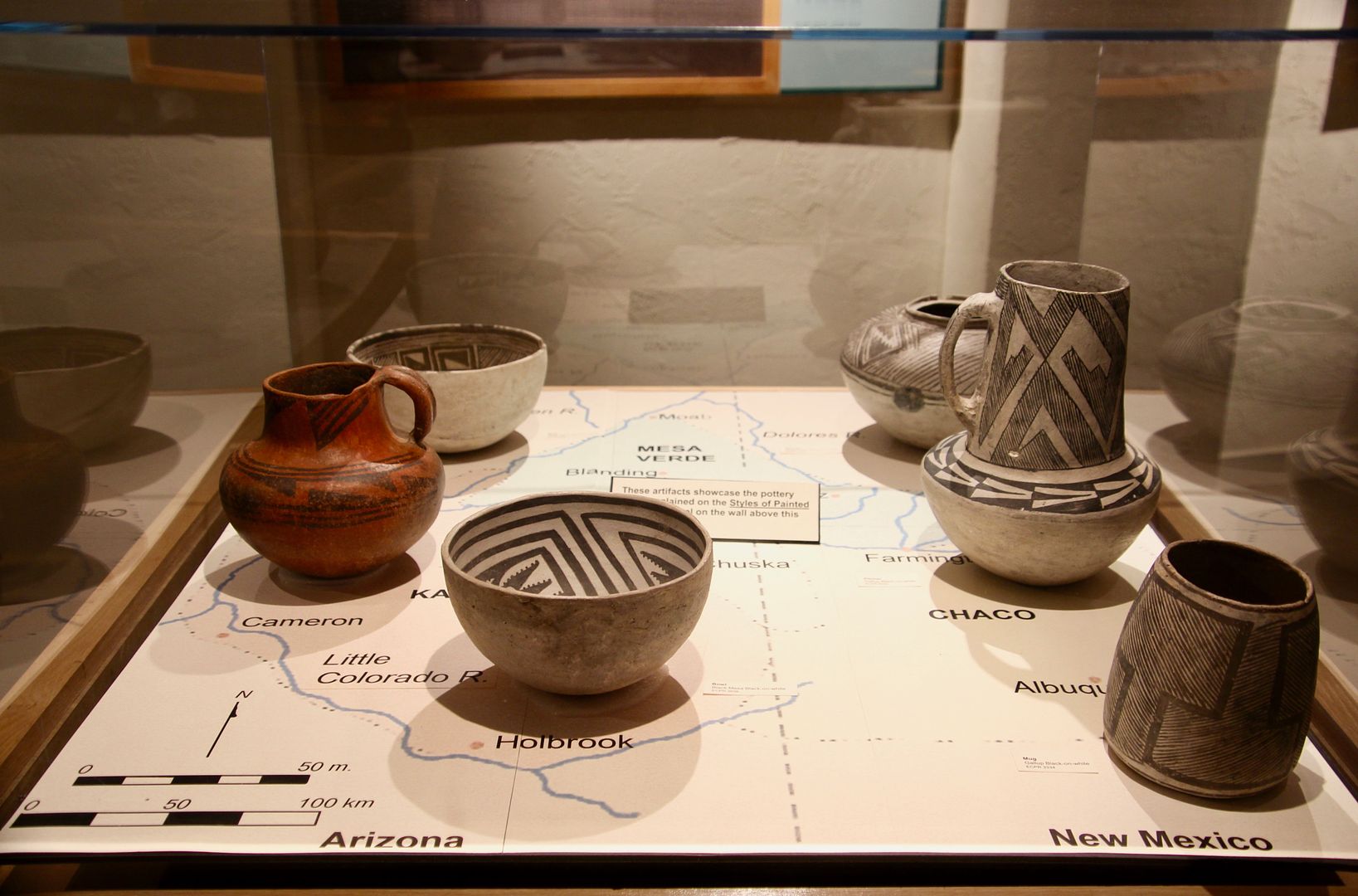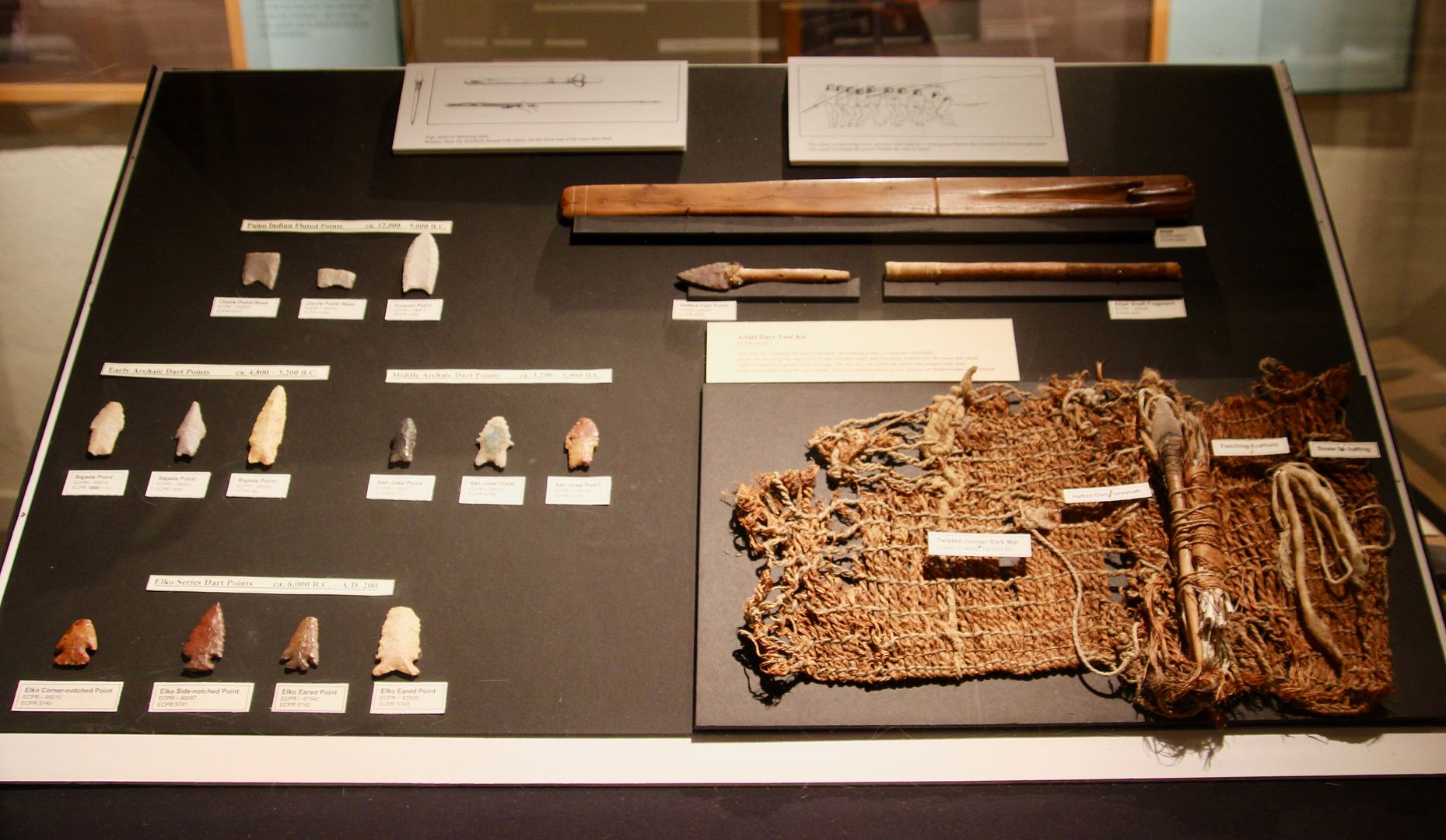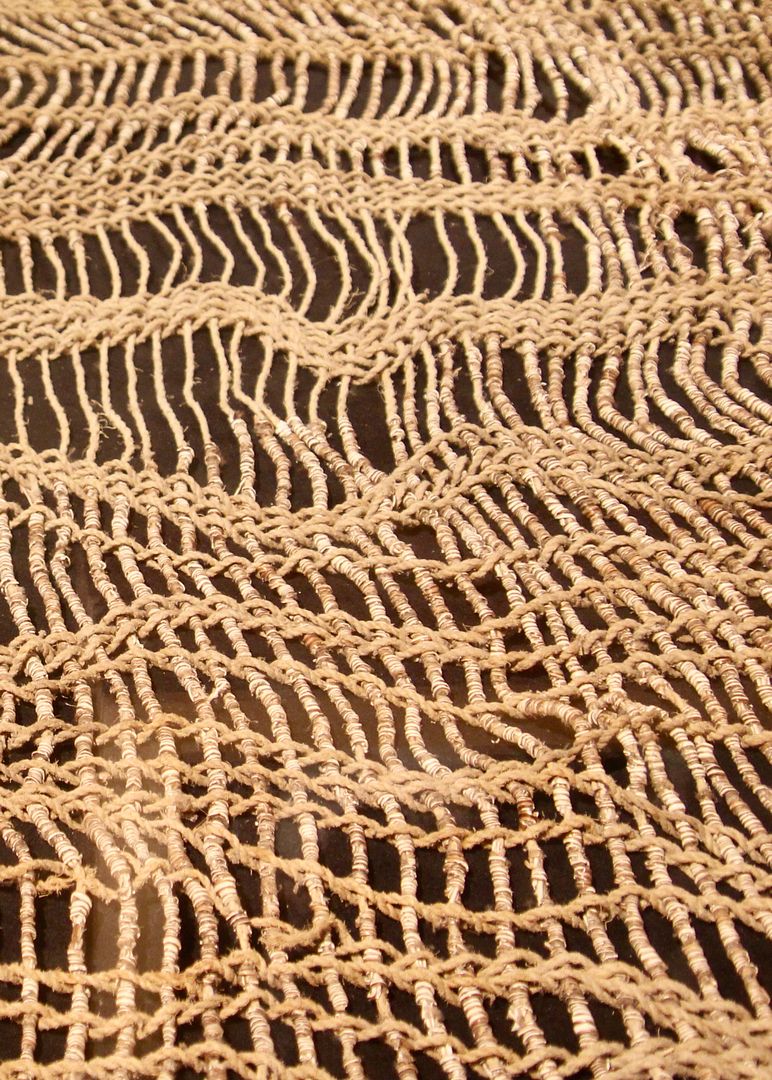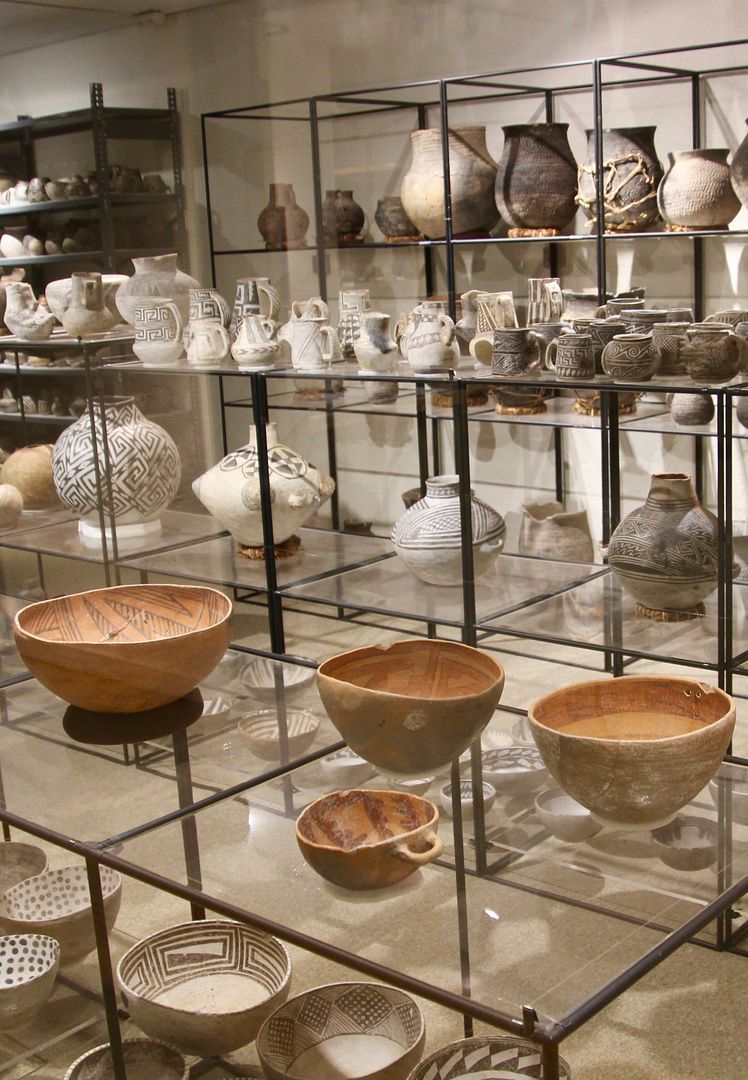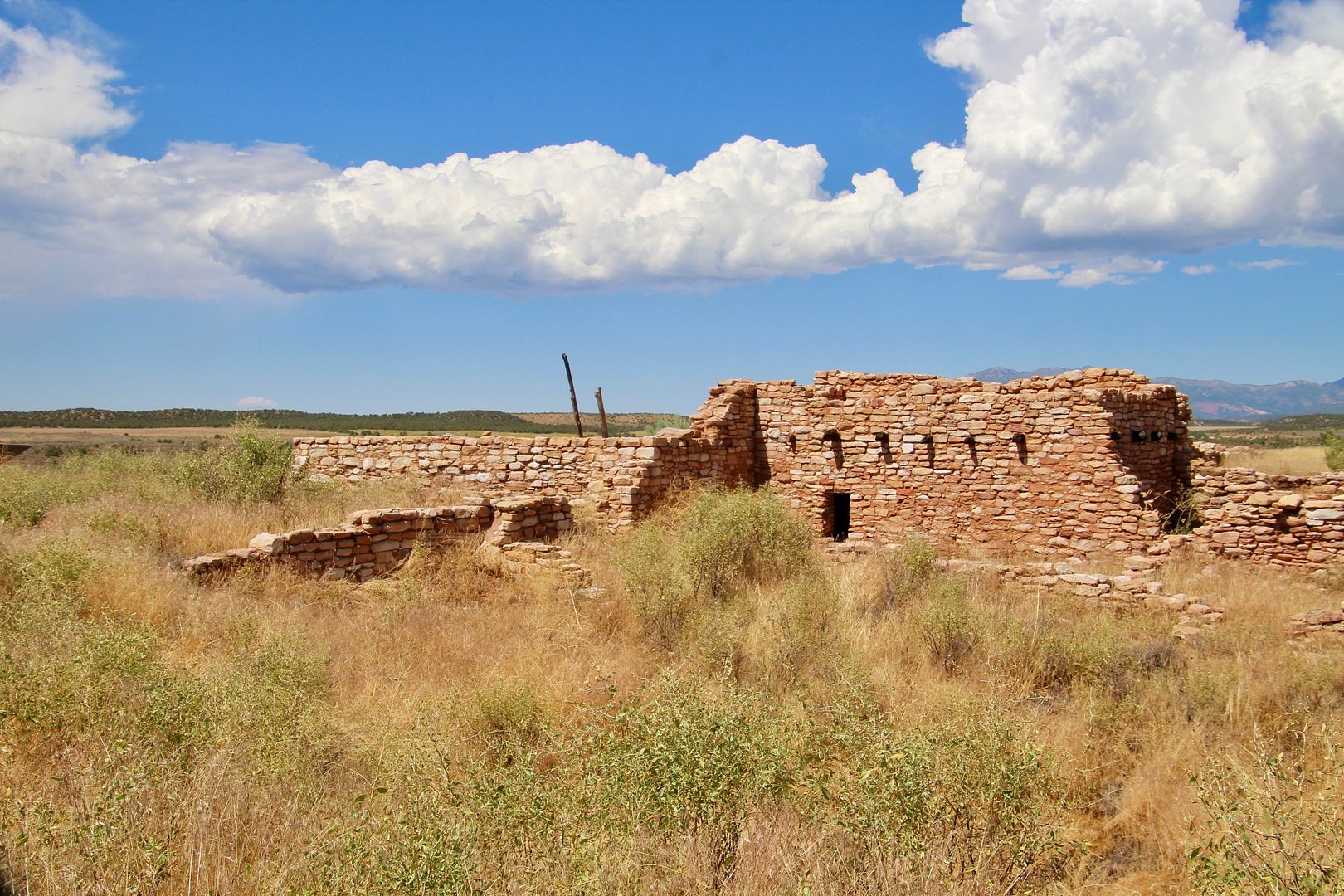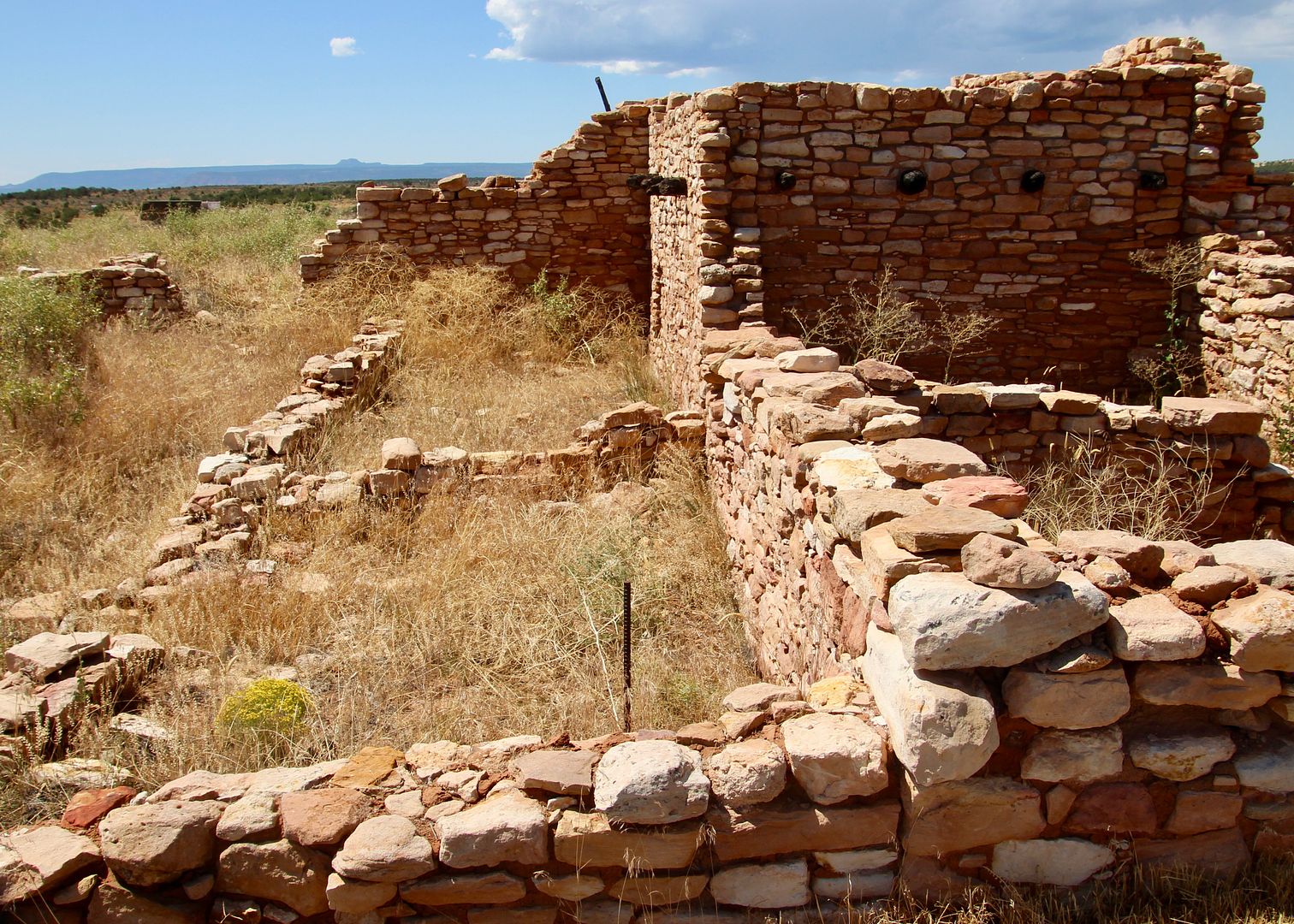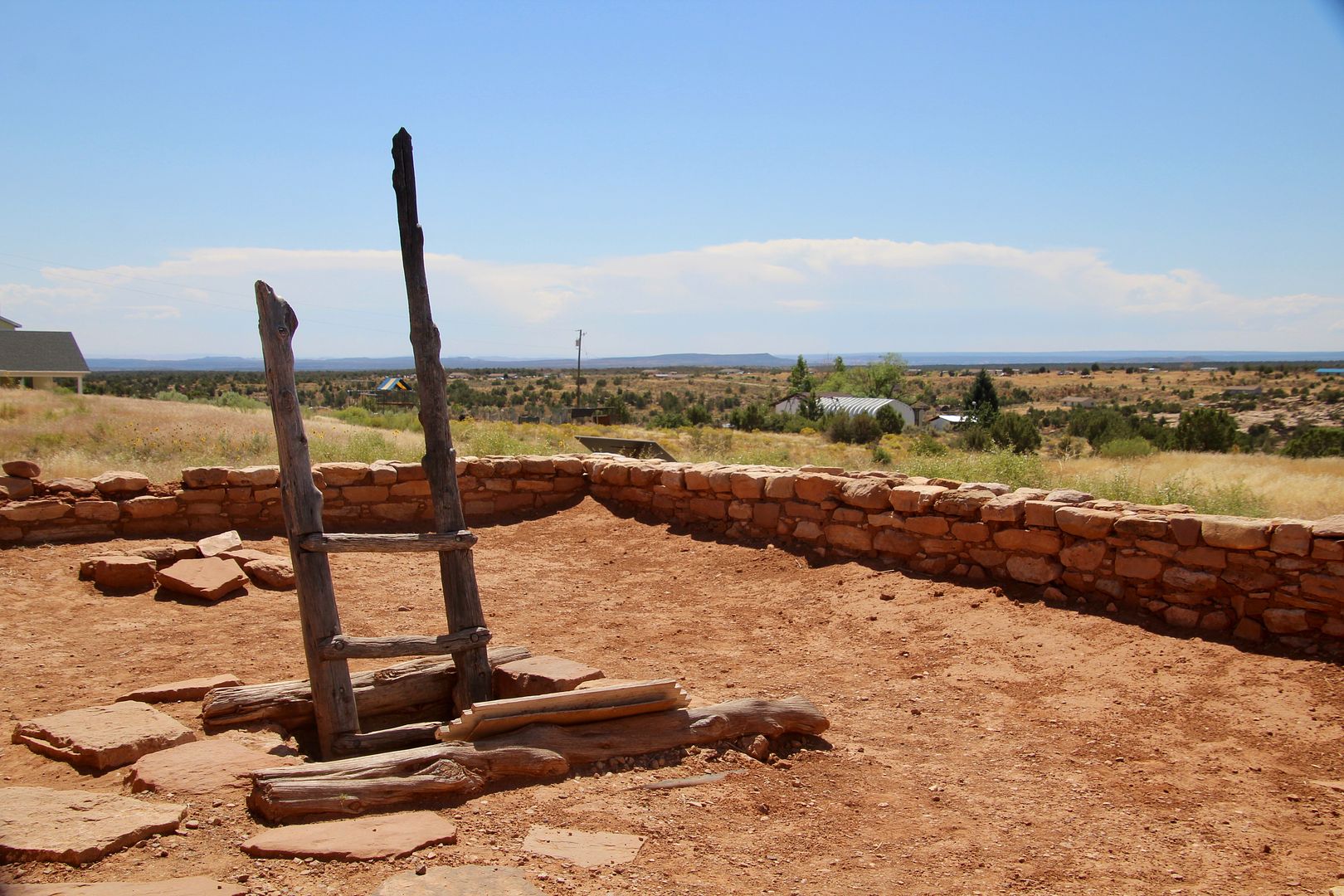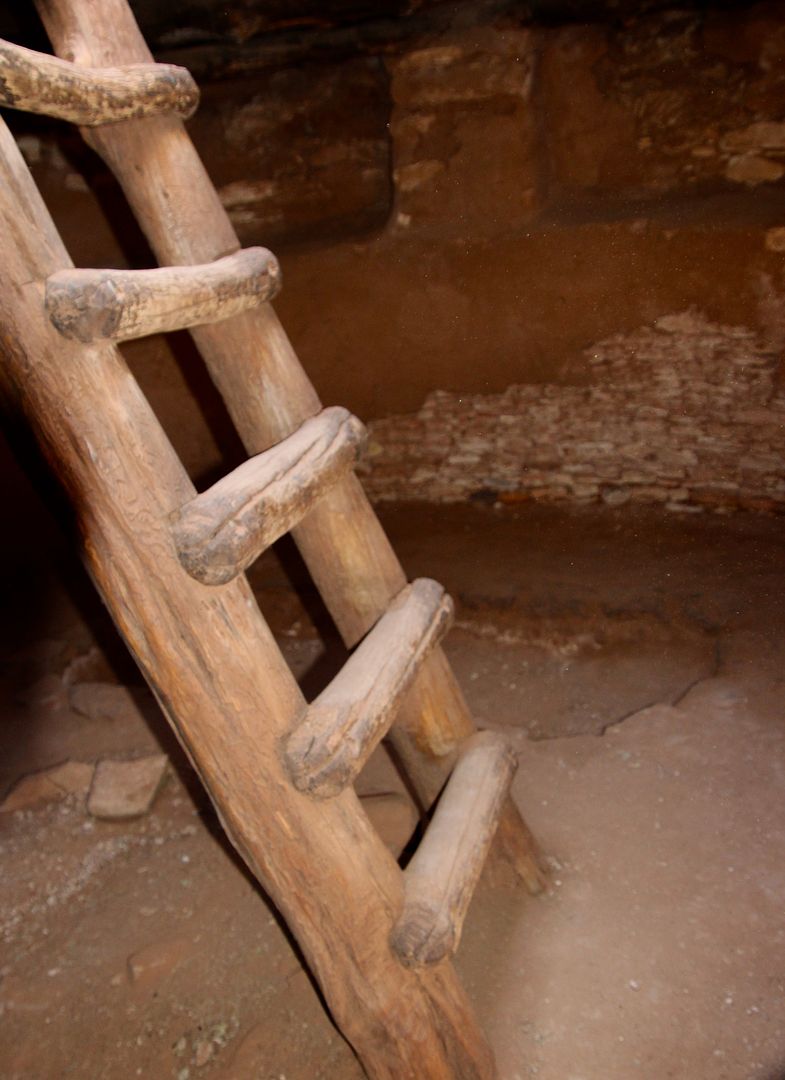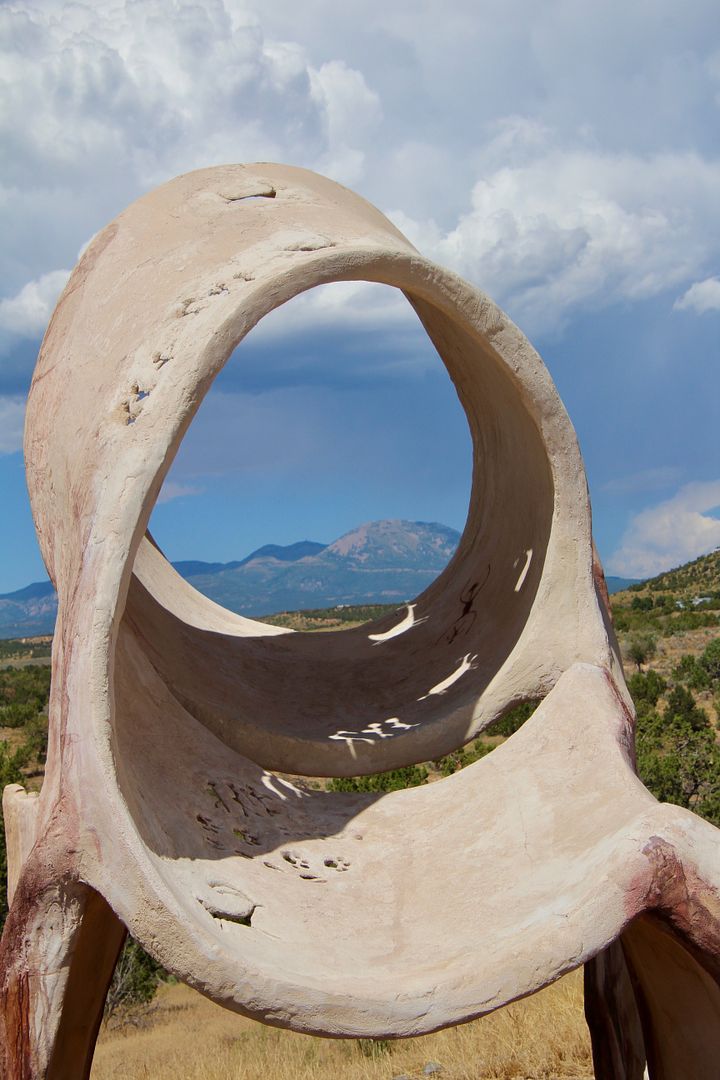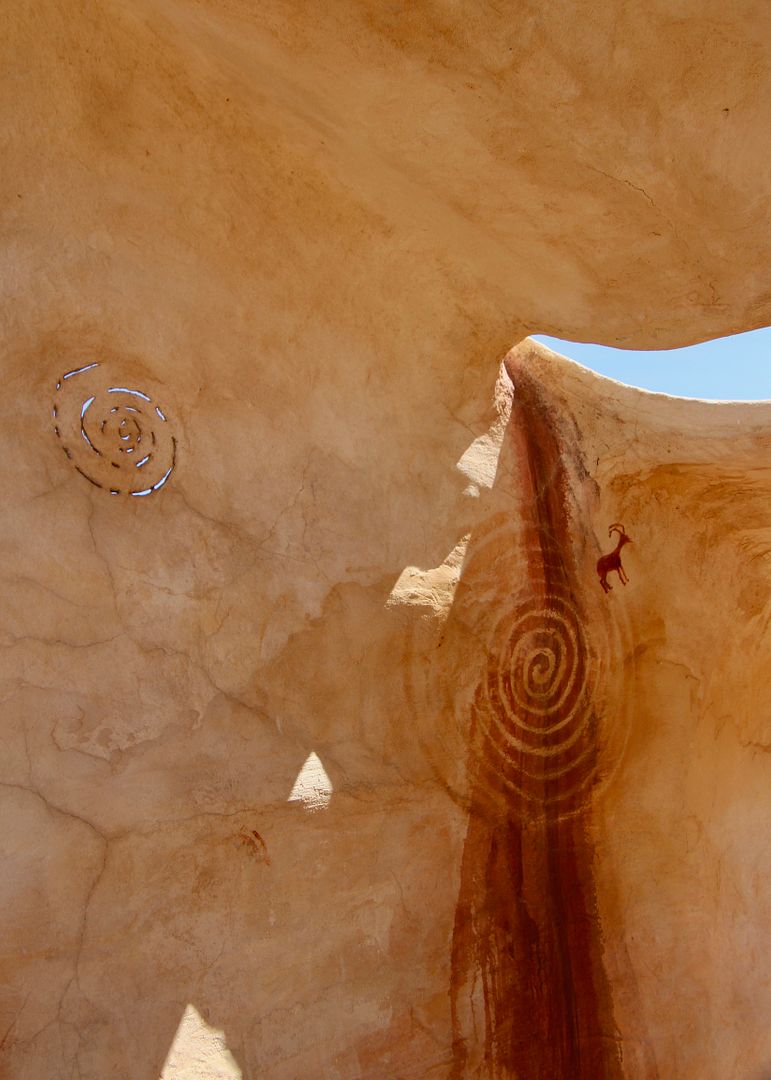Excited to visit the tribal park (only 4 miles from the KOA where we were staying), we made a quick stop first at the Navajo Nation Welcome Center
Entrance to the park is just a short drive down the road from the Welcome Center. Entrance fee is $20/vehicle for 2-days. Admission can be purchased here or at the entrance. A large Navajo Market s located next to the Welcome Center for those interested in purchasing jewelry and other goods made by the local Navajo. Several exhibits and murals can be seen inside.
The Navajo Code Talkers, who played an important role in our victory in the Pacific during WWII, are commemorated here. The first 29 to serve came from this part of the country; others followed. The Navajo language is still widely spoken on tribal lands (that are the size of West Virginia).
More than 50 movies have been filmed in Monument Valley beginning in 1925. Director, John Ford, filmed 10 Westerns here, including Stagecoach (1939), She Wore a Yellow Ribbon (1949), The Searchers (1956), How the West Was Won (1962) and more, with many starring John Wayne.
Many recent movies have also been filmed here: Back to the Future III (1990), Thelma and Louise (1990), Wild Wild West, (1999), Mission Impossible II (2000), The Lone Ranger (2013). That’s why we all recognize so many of the rock formations here!
Entering the tribal park, we stopped first at the Visitor Center to obtain information about the scenic drive, hiking trails, and tours.
The View Hotel, View Restaurant and Monument Valley Trading Post can all be found here. There is a huge array of authentic Navajo items for sale including hand-woven textiles, jewelry, pottery, sand paintings, and more.
Views of the valley from the observation deck are amazing! The monuments here show the three stages of erosion:
- Mesa: a rock formation that looks like a table; they are usually wide. Stable, and are the first stage of erosion.
- Butte: smaller than a mesa and is the second stage of erosion
- Spire: the final stage of erosion, it is a rock formation that has become narrow and free standing.
Sentinel Mesa (left) and Castle Butte
West Mitten Butte, East Mitten Butte and Merrick Butte
Mitchell Mesa (foreground)
The scenic drive through the valley is on a 17-mile unpaved dirt road that takes around 2 hours (depending on how many times you stop and for how long). Because the road is pretty rough in some areas, many chose to take a tour in a park vehicle. The guides are all Navajo and provide interesting commentary along the way. We decided to drive because we had our doggie, Sadie, with us. Leashed pets are permitted, but not on tours.
There are 11 stops along Valley Road, but there are many places where you can just pull over. Navajo families still live in the valley (as they have for hundreds of years); therefore, some parts of the park are private property (off limits).
Our first stop was near the Mitten Buttes…so named because they look like a hand with the thumb sticking out. The Navajo, however, believe these monuments are spiritual beings watching over the valley. Below is West Mitten Butte and Merrick Butte (named for an ex-calvary man turned silver prospector). The second photo is East Mitten Butte; and, the third is The View Hotel and Visitor Center. All rooms have balconies providing fabulous views of Monument Valley. Sweet!
Below are rock formations: Three Sisters (a Catholic nun facing her two pupils); and, Camel Butte (can you see why it is named this?)
This is called John Ford’s Point because, you guessed it, lots of movie scenes were filmed here. Our doggie, Sadie, is always interested in looking over the edge. She seems to know not to get too close…
From the Point, you can also see the Three Sisters. Look for this background when you are watching old westerns!
This iconic view is of Totem Pole, a spire. To the left are the Yei Bi Chei (Navajo spiritual gods) that represent dancers emerging from a hogan (Navajo home).
Look how tiny our Mini Countryman looks next to Cly Butte (named after a well-known Navajo medicine man).
A small trail at the North Window Overlook leads to stunning views of another part of the valley.
A free-standing spire, this is the Thumb. Most think it looks like a cowboy boot!
Photos do not convey the amazing beauty of Monument Valley. Anxious to experience the buttes and spire close up, we decided to return the next day to hike the Wildcat Trail.
This is one of my absolute favorite places that we have visited in the last 5.5 years! The geologic and cultural history is fascinating. Do not miss the chance to visit if you are in the region. For additional information about the park, go to www.mavajoparks.org.
